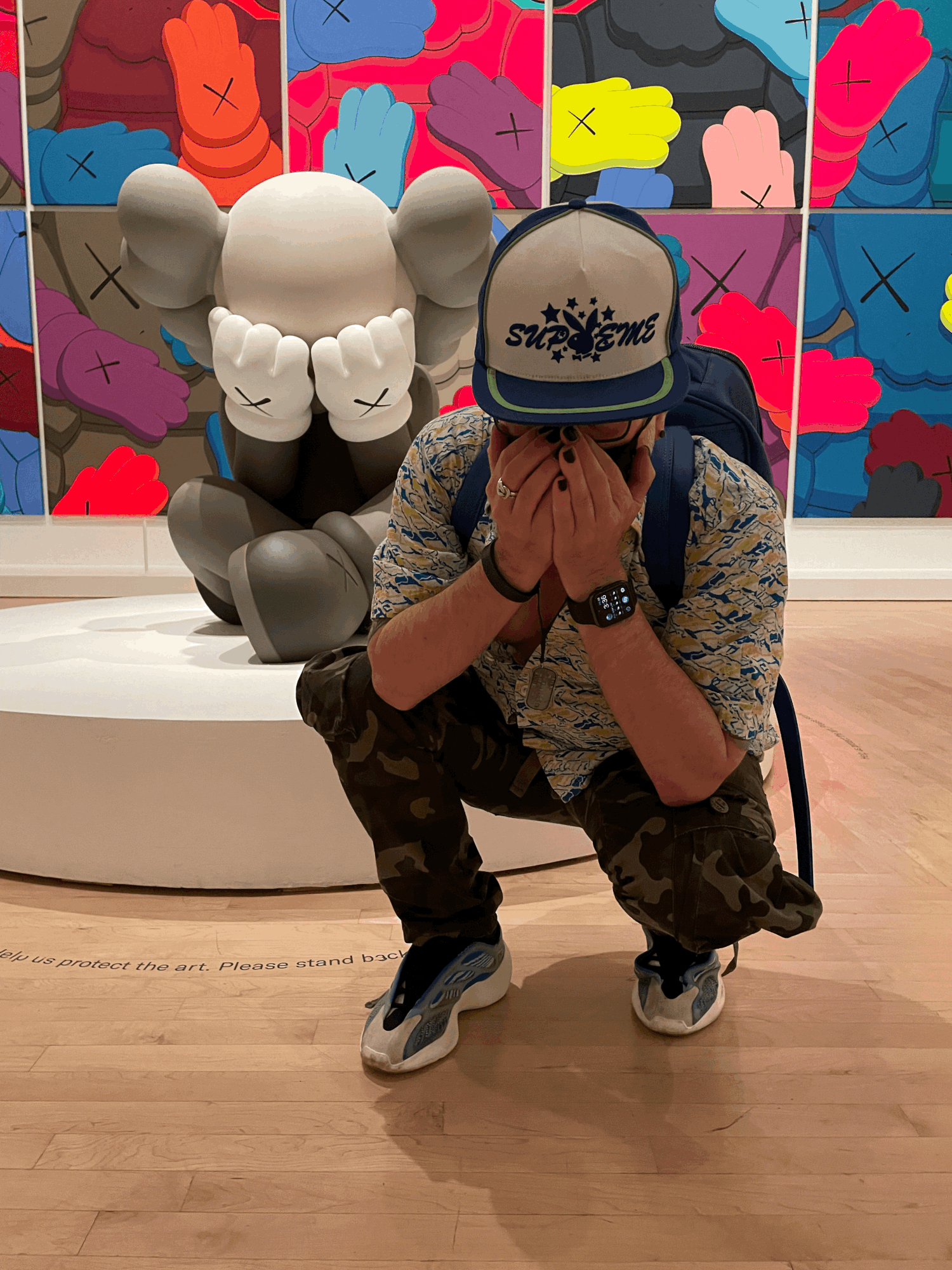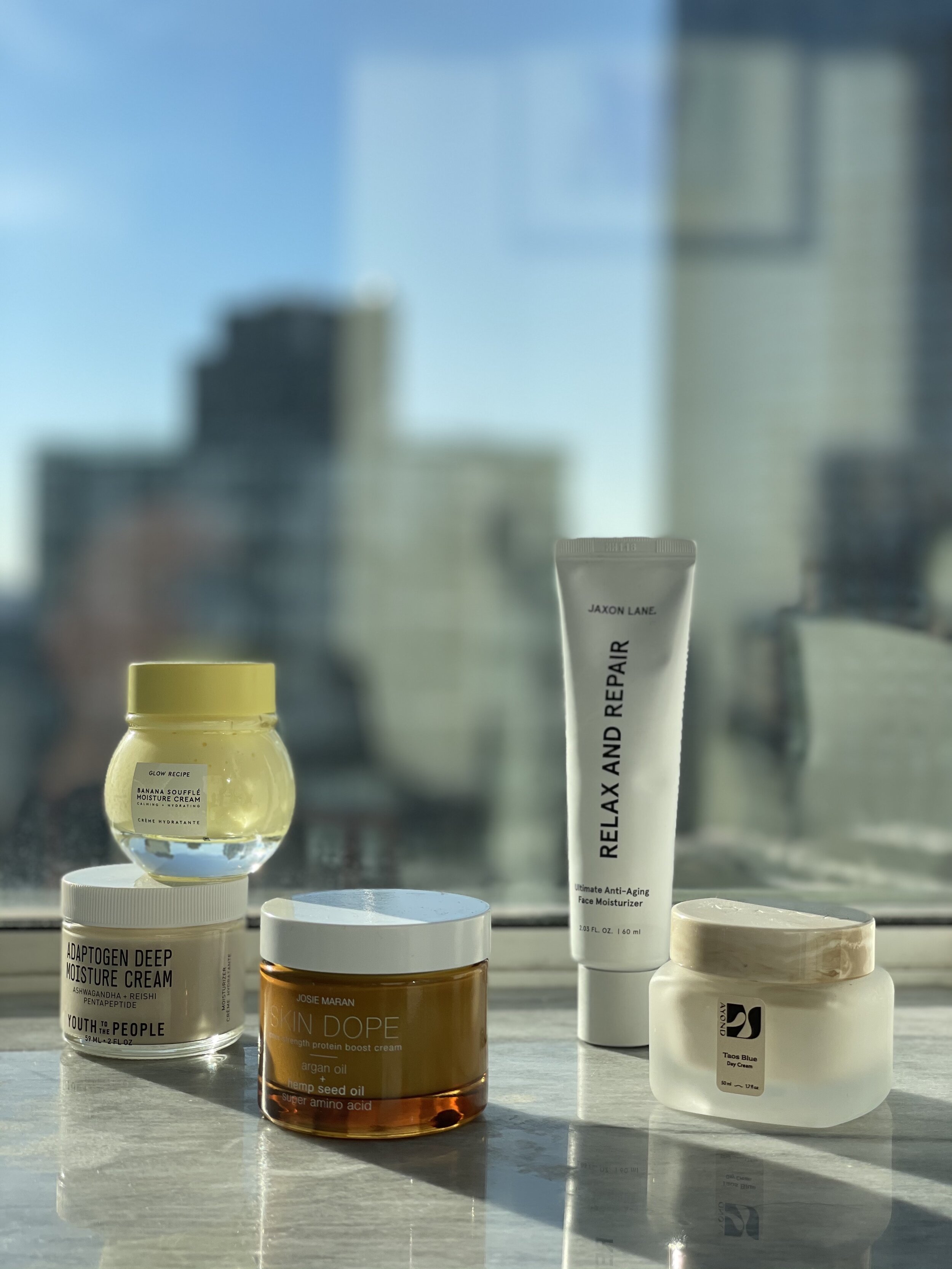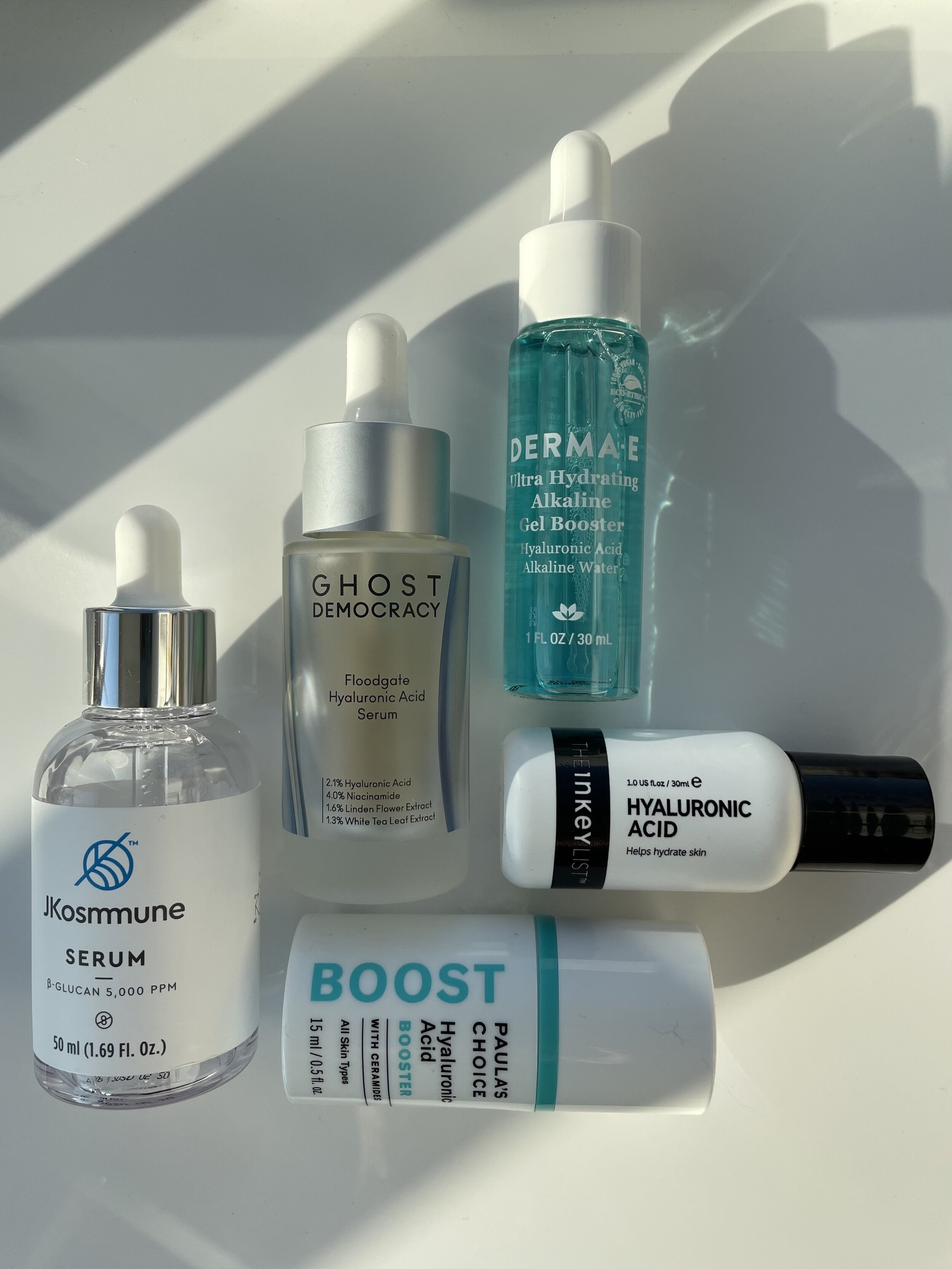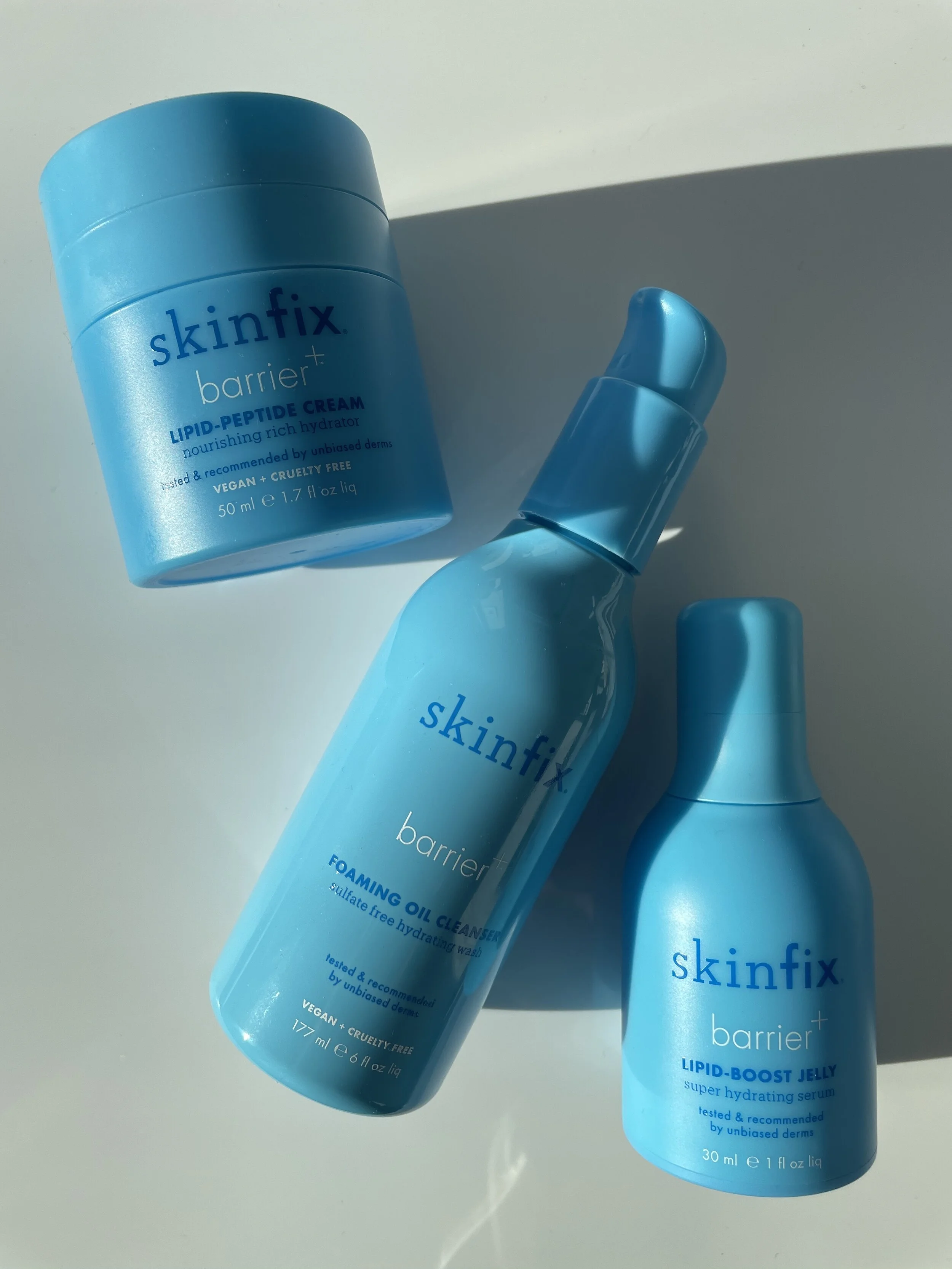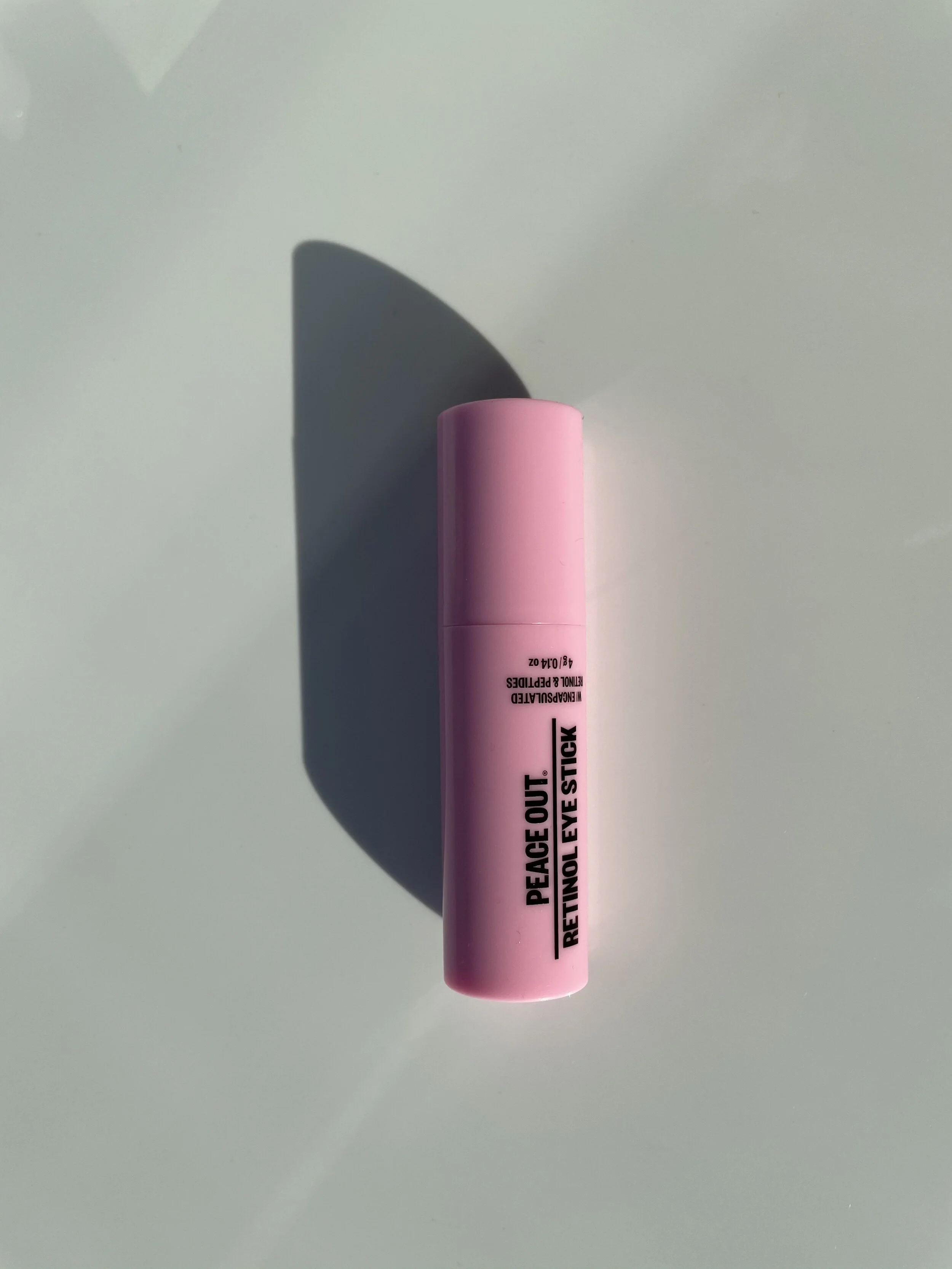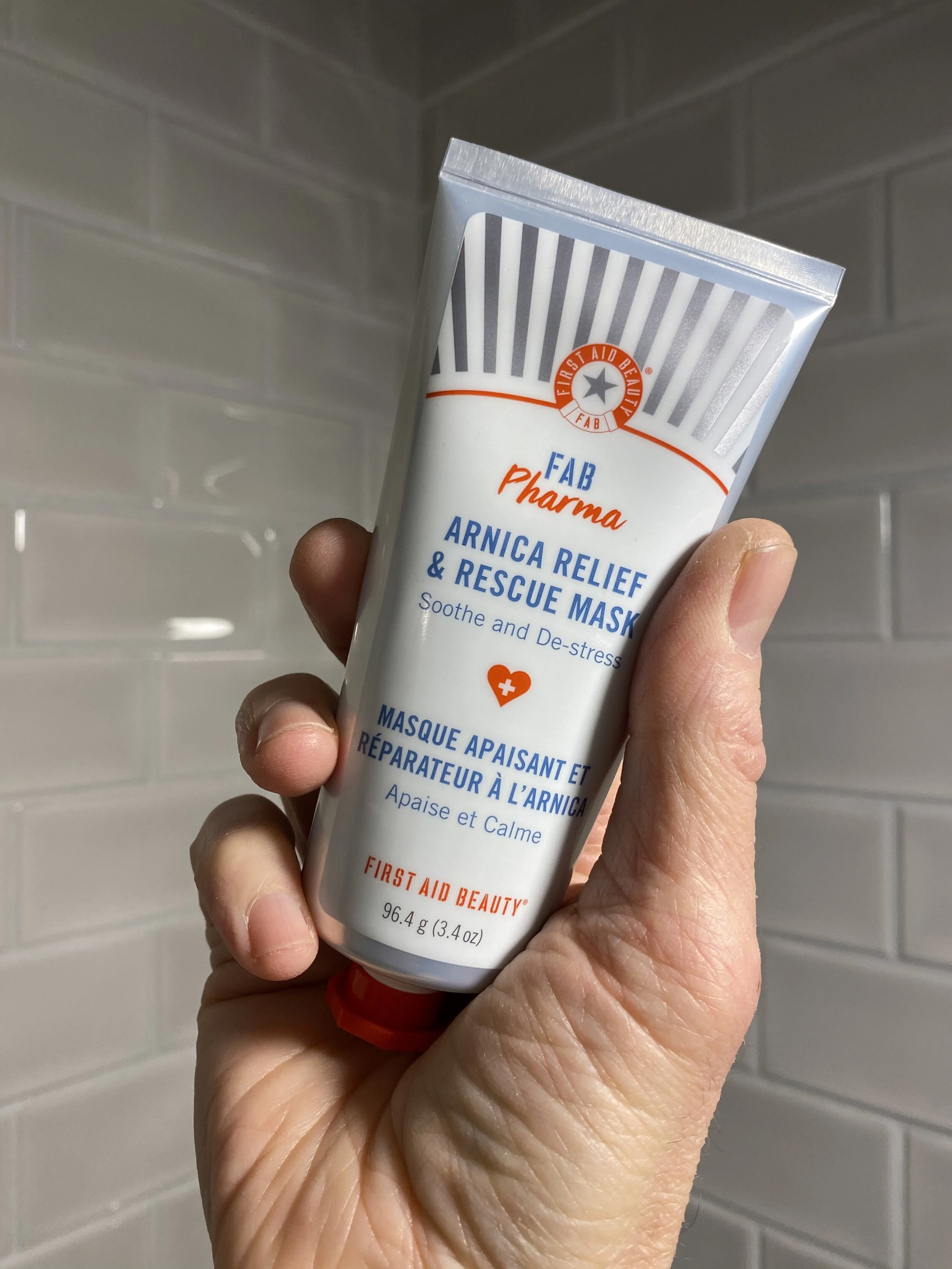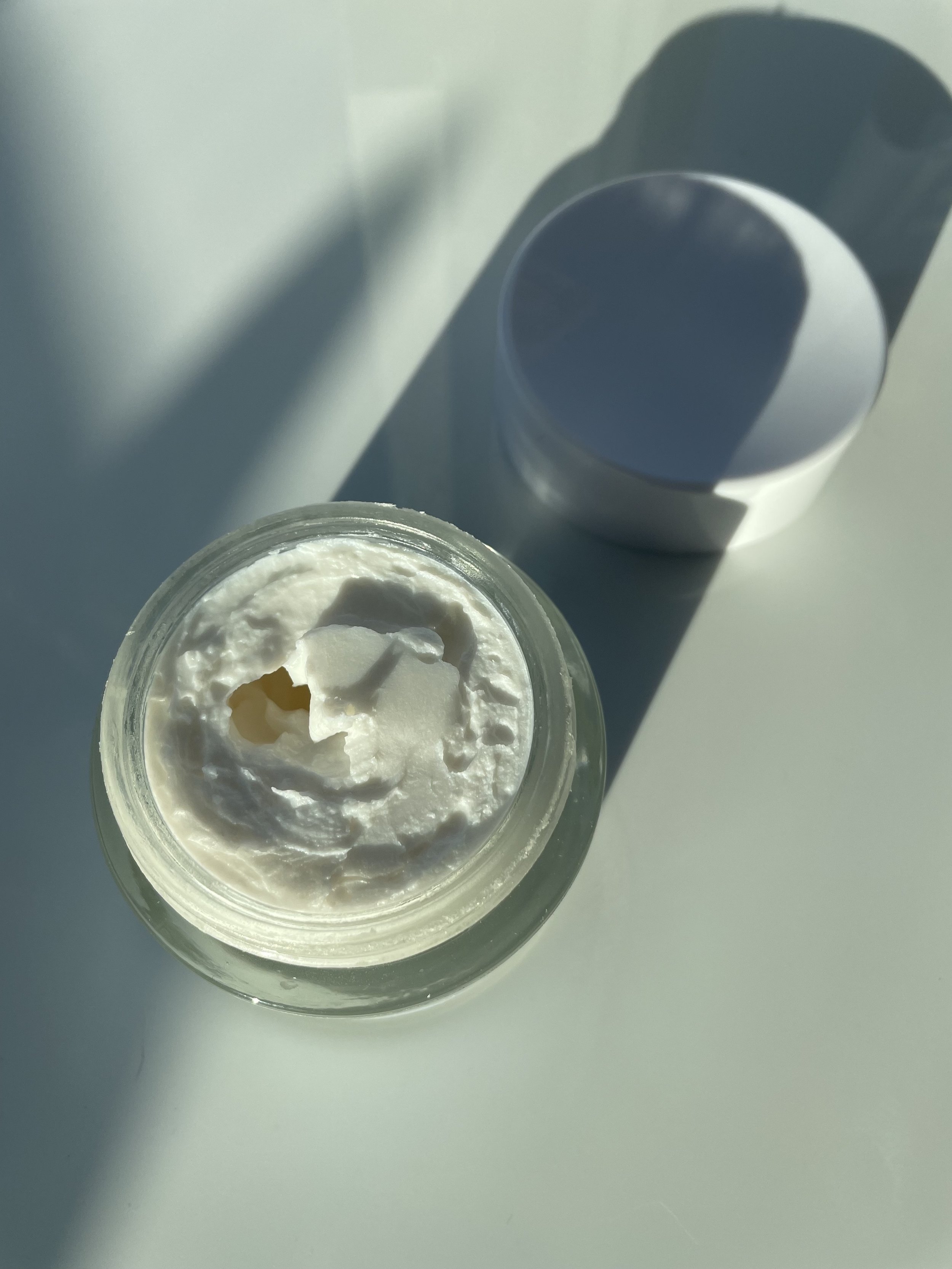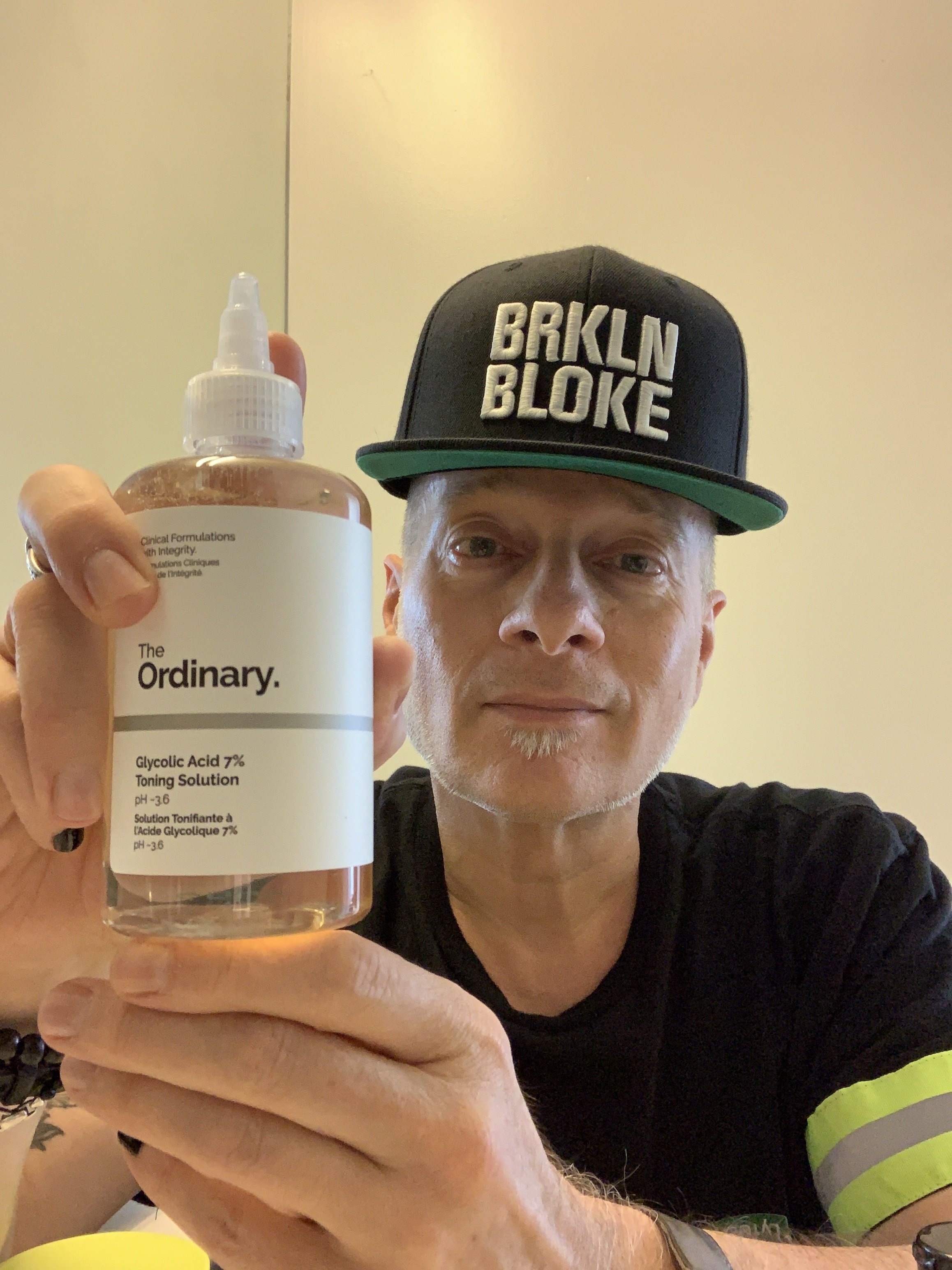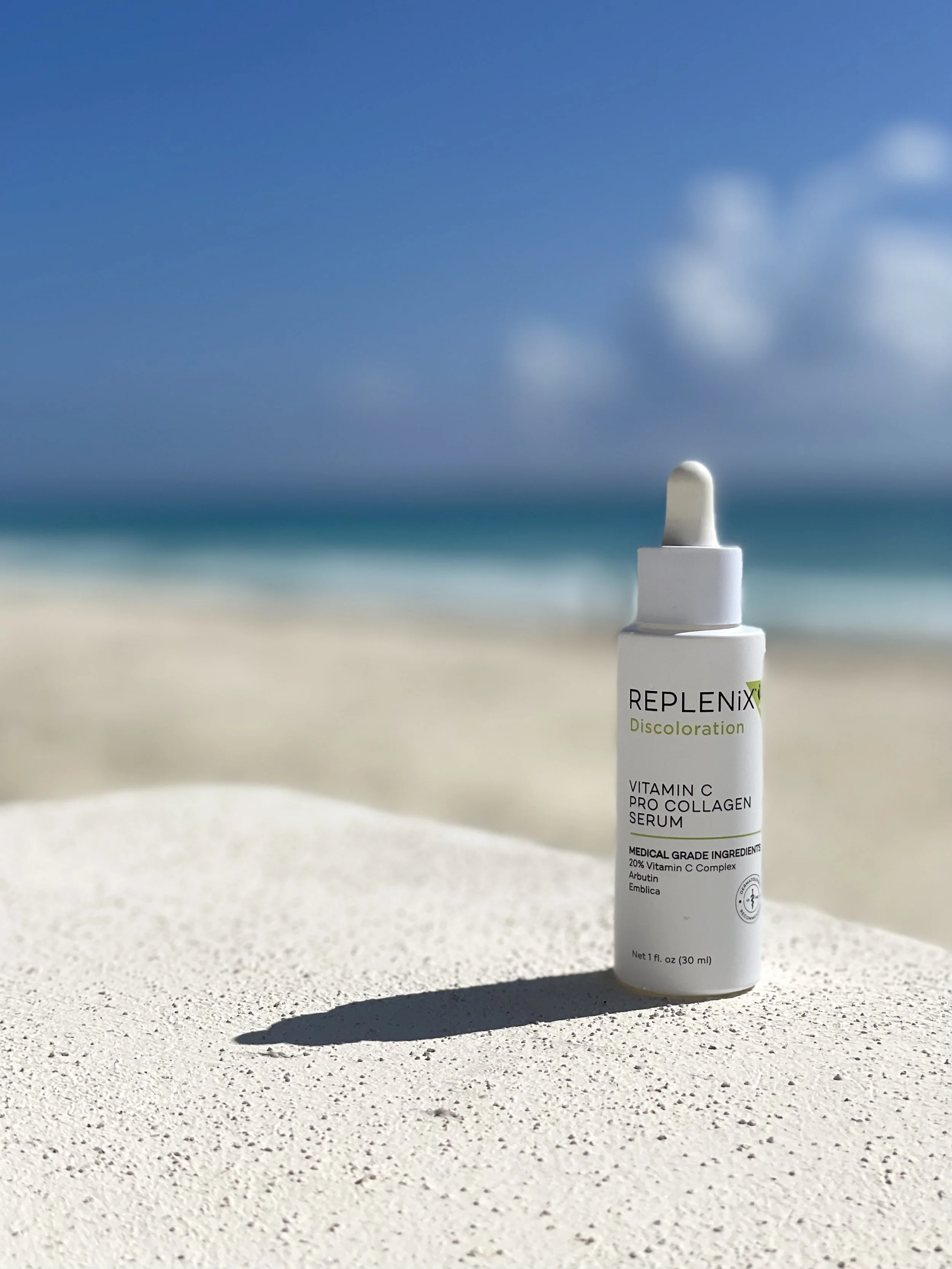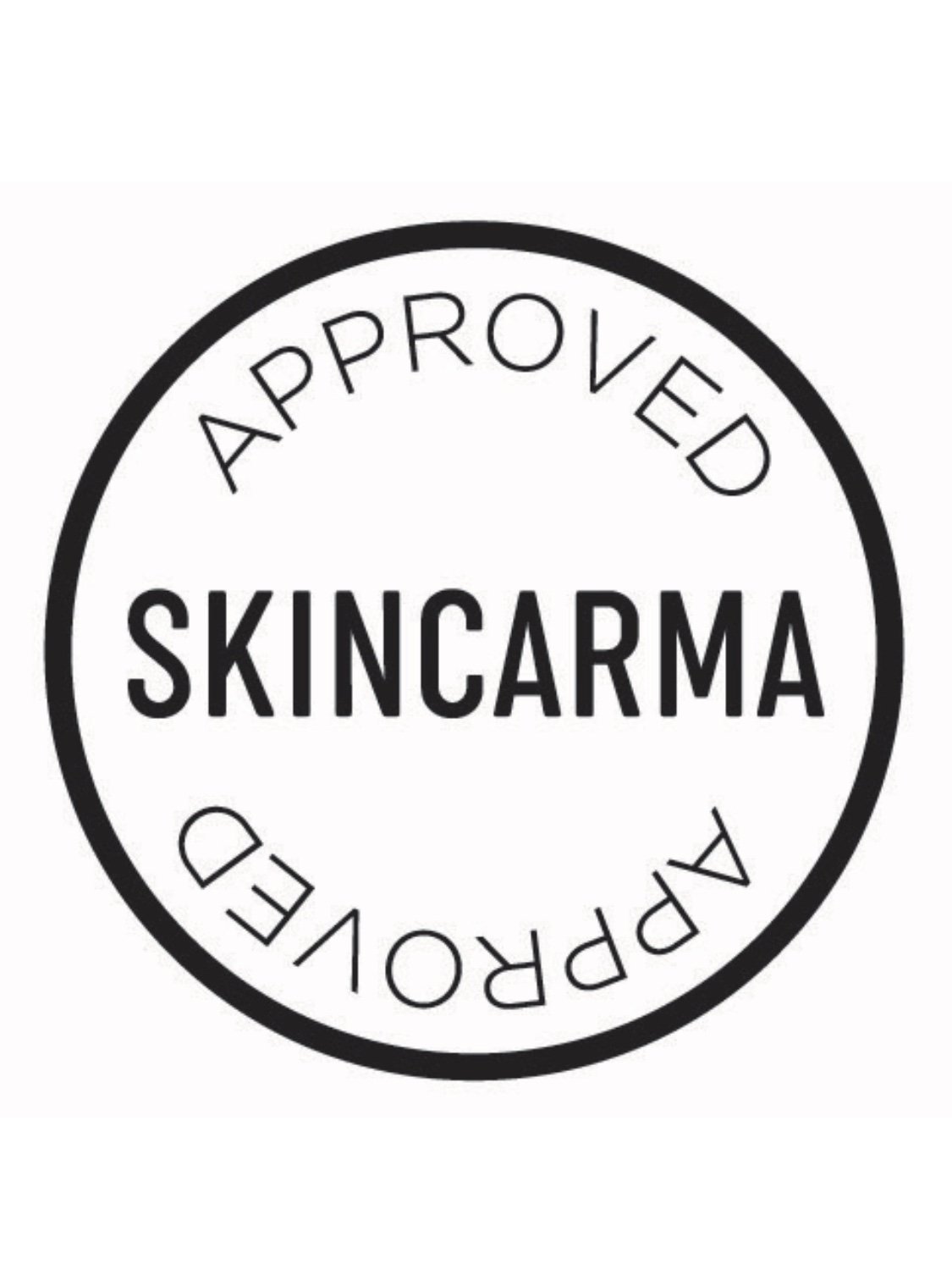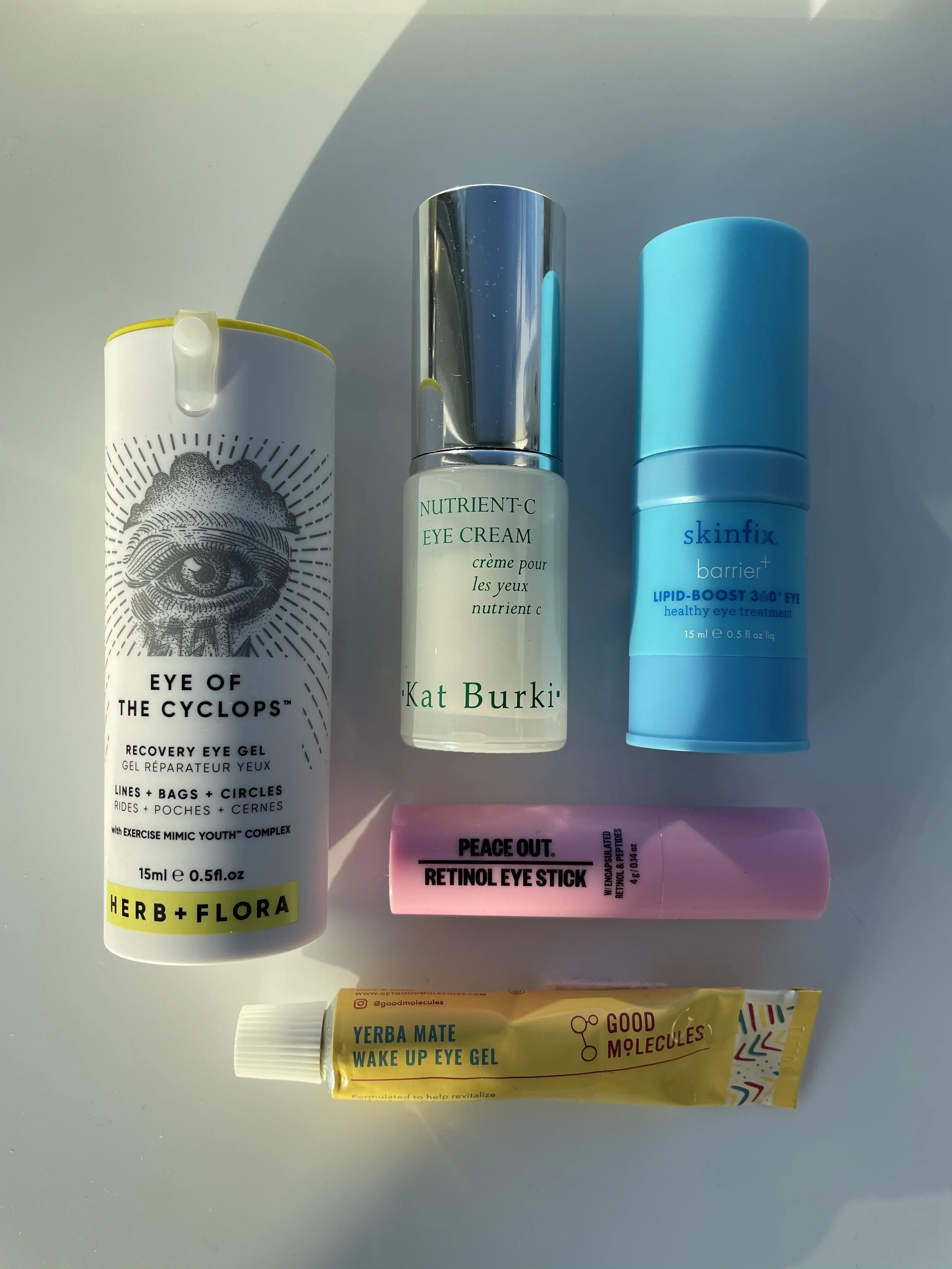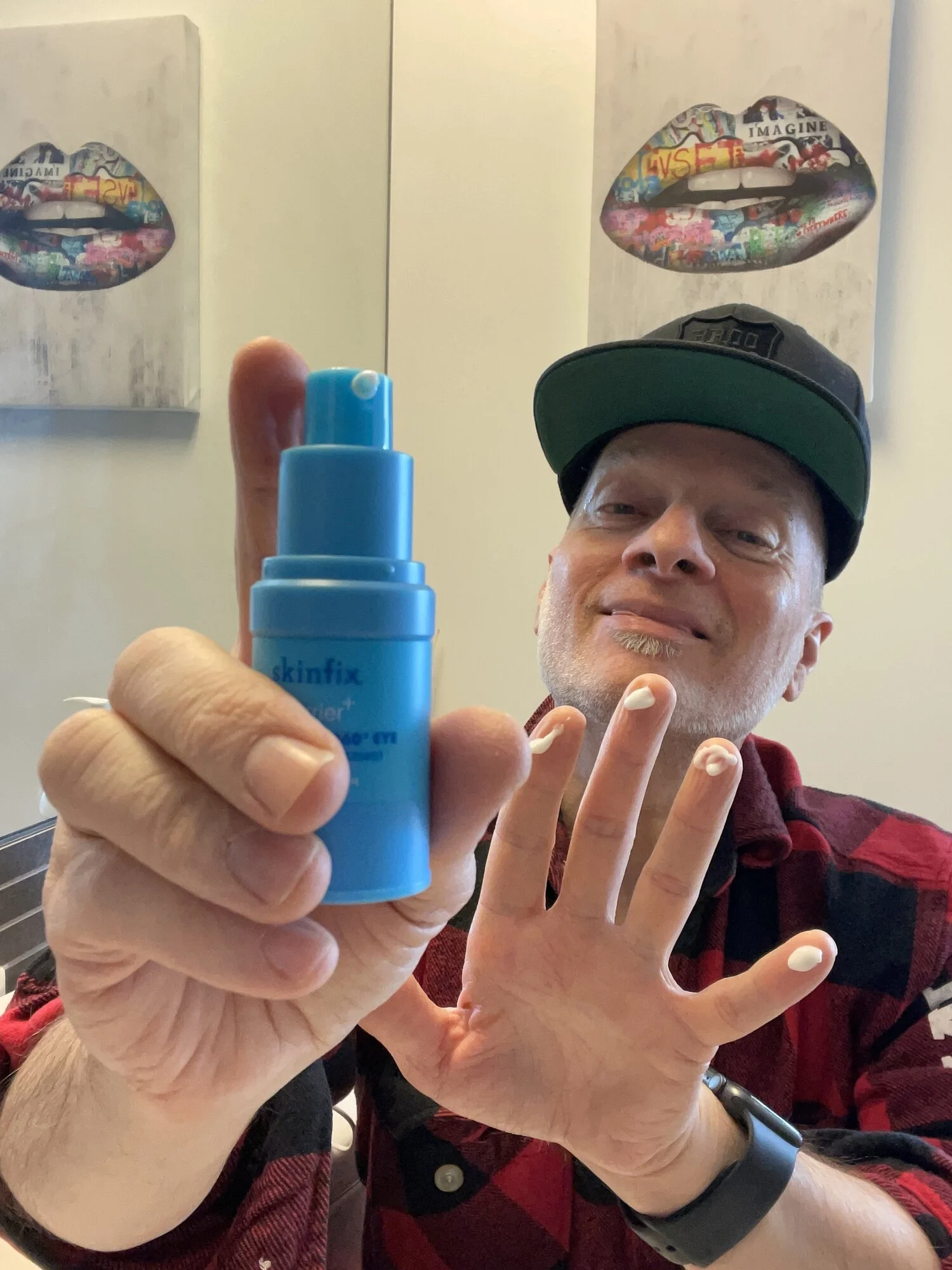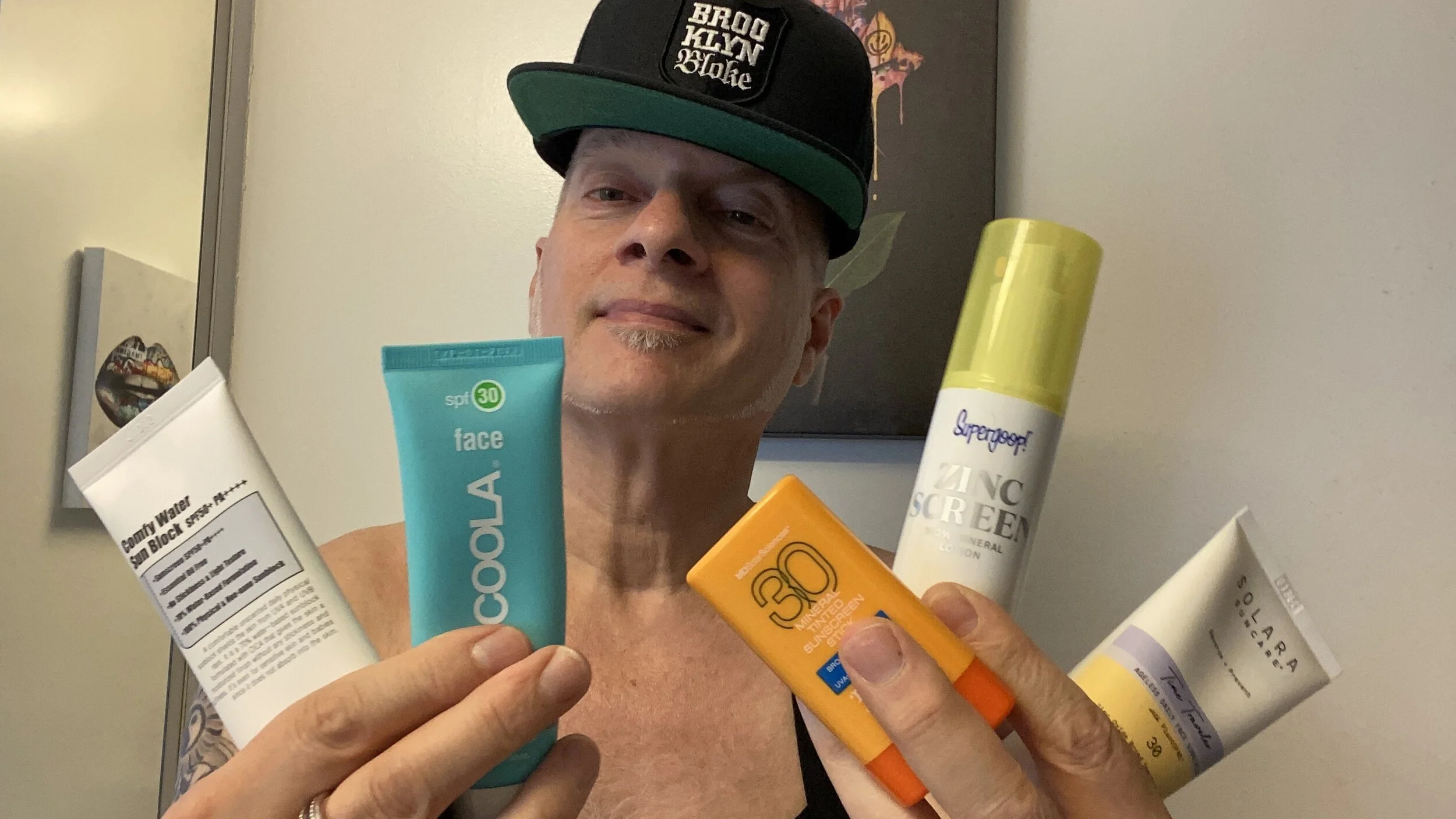SEASONAL SKINCARE TRANSITIONING: MOISTURIZERS I LOVE THAT MAKE ME EXCITED FOR COLD WEATHER - PART ONE – BEST HYDRATING MOISTURIZER, BEST FACE CREAMS FOR DRY SKIN
Over the summer, I hit up numerous art exhibitions. Reflecting back on each, I’m keenly aware of the inspiration effect they had on me, nourishing my creativity and sparking my spirit.
Two experiences stand out as the most influential. The Immersive Van Gogh Exhibit at Pier 36 on the East Side of Manhattan over my birthday weekend was an experience like no other.
With its majestic projections of Van Gogh’s most famous works beamed onto 20-foot high walls from floor to ceiling, and set to music, the exhibit was transcendent. The art was alive as it reverberated through my heart, head and soul. It made me feel alive again and is something I will never forget.
But perhaps the art excursion that left the most indelible mark on me was the KAWS: WHAT PARTY? exhibit at the Brooklyn Museum the weekend before.
If you’re unfamiliar with KAWS the artist, you’re likely familiar with his work — super creative, colorful pieces that bridge art, pop culture and commercialism. Brian Donnelly, Brooklyn-based artist known as KAWS, is most famous for his iconic character pieces that feature X’s for eyes.
I have been back to the Brooklyn Museum numerous times since. In fact, I went back to view the KAWS exhibit twice more, each time experiencing something I hadn’t sensed on the previous visits. Art is like that, I guess. Your mood, your attention, the needs of your soul can vary greatly in those unique moments.
Last week, I hit the museum again to view the Obama Portraits, a pair of paintings of President Obama and First Lady Michelle Obama. Painted by Kehinde Wiley, the portrait of the former president seated in what seems like a sea of leaves, was the most captivating of the two for me. That’s not to say that Amy Sherald’s portrait of Mrs. Michelle Obama isn’t jaw-dropping; it is.
But there’s just something surreal about Obama’s portrait.
I always find myself struggling to understand an artist’s true intent. Sure, I’m happy to stand in front of a work of art and feel the piece in front of me, to let the work evoke what it will. That’s perhaps the artist’s greatest intent — to elicit an emotion. But I want to know what the artist was thinking and why he created what he did. What was his inspiration?
Here’s what I found on the Artnet website about Wiley’s portrait of President Obama:
The most spectacular and notable thing about the portrait is how he hovers against a lush green backdrop of leaves and flowers. Where, we might ask ourselves, is the president meant to be, exactly? (The enveloping background inspired some Internet jokesters to compare the image to the famous meme of Homer Simpson getting swallowed up by a green hedge, or to Beyonce’s famed maternity portrait.)
The surreal space seems to suggest an almost miraculous status for this president. Obama’s left foot, as New Yorker writer Vinson Cunningham aptly pointed out, doesn’t press into the earth as one might imagine, but floats in an almost otherworldly way, like a Byzantine saint in a golden eternal realm.
Wiley painted his portrait working from a series of photographs he made of Obama and the resulting image has been celebrated (rightly) for its verisimilitude. But the greenery seems almost alive: As with many of his paintings, Wiley does not keep the flora neatly in the background but allows it to curl and twist with its own agency.
The flowers around him are more than decorative. In fact, they symbolically tell his life story: jasmine references Hawaii, where Obama was born; the African blue lilies represent Kenya, Obama’s father’s birthplace (Wiley’s own father is Nigerian); and chrysanthemums are the official flower of Chicago, the city where his political career began and where, of course, he met Michelle Obama.
It is, of course, not lost on me that the portrait of the president seemingly swallowed by a bed of leaves is evocative of fall, my favorite season of the year, an my own childhood antics. Some of my favorite memories are rooted in the fall, when millions of maples leaves would cascade down in what felt like an endless blanketing of the earth. Why rake them, I always asked myself, if they’re just going to keep falling?
My friends and I played in the leaves, raked up the leaves — and, like Obama, were ourselves swallowed by the leaves. I often buried myself in a pile of wet leaves only to leap out as my brother walked past. He was, of course; startled and fell for it every time.
I can still sense the smell of the damp maple leaves around me as I lurked in the pile, sometimes for a half hour or more, waiting for him to come near. Their crisp, damp chill foretold the winter to come...
The skincare stuff starts here.
As I do each fall, I publish a two-part series of what I consider to be among the best moisturizers for colder weather. That is, face creams ideal for dry, dehydrated skin no matter the skin type. Contrary to commonly held beliefs, even oily skin needs extra moisture during periods of low-humidity. When the air around us is very dry, it drains the water (and the life!) out of our face.
Around this same time last year, I kicked off my FW20 series of my top ten cold weather face creams in a blog article titled, Winter Moisturizers Part I – Some of the Best Face Creams for Dry Skin and All Skin Types in Cold Weather. If you missed it, by chance, you can read it here.
Then, a couple of weeks later, I published Winter Moisturizers Part 2, which you can read here. The second in the series happened to feature two richer face creams that I still love using a year later.
WINTER MOISTURIZERS PART 2 – SOME OF THE BEST FACE CREAMS FOR DRY SKIN AND ALL SKIN TYPES IN COLD WEATHER
The first of the two is Youth to the People’s Adaptogen Deep Moisture Cream. It not only comforts dry, dehydrated skin but it can help calm skin that’s become sensitized and raw from the harsh, cold air. I’ve been there and I know first hand how the cold can compromise the health of your skin.
The Adaptogen Deep Moisture Cream is a rich blend of nourishing and replenishing plant oils, antioxidant botanical extracts and skin-calming adaptogens. Among its moisturizing oils are Sunflower Oil, at ingredient number two, Squalane, Jojoba Seed Oil and Shea Butter. In the cold, that’s exactly what skin needs. But the star actives, as indicated in the product name, are two adaptogens, Ashwagandha Extract and Reishi Mushroom Extract, which can help to calm overactive, stressed-out skin.
PRODUCT REVIEW: YOUTH TO THE PEOPLE ADAPTOGEN DEEP MOISTURE CREAM – BEST MOISTURIZER FOR IRRITATED SKIN
To this day, I consider Youth to the People’s Adaptogen Deep Moisture Cream the best moisturizer with adaptogens to calm irritated skin. There’s nothing else like it.
The second notable stand-out from my FW20 series is the Jaxon Lane’s Relax and Repair moisturizer. The brand behind the popular Bro Mask, the Jaxon Lane Relax and Repair comes in a tube (which I love!) and is infused with beneficial, pro-skin health, anti-aging actives like Niacinamide, Hyaluronic Acid, collagen and ceramides.
It’s one of the best face creams for men — at least one that’s marketed for men. I don’t have much faith in products made for men; skin is skin. And all skin needs the same things — many of them in Jaxon Lane’s fantastic face cream.
PRODUCT REVIEW: JAXON LANE RELAX AND REPAIR – BEST FACE CREAM FOR DRY SKIN, BEST FACE CREAM FOR MEN
What’s the Difference between Dry Skin and Dehydrated Skin?
Many people confuse the two. They’re not the same thing. Dry skin is a skin type. Dehydrated skin is a skin condition, just as being thirsty is a sign that your body is dehydrated. Dehydrated skin lacks water and any skin type, no matter its level of dryness or oiliness can be dehydrated.
In particular, dehydration is something that’s common to all of us in the cold as the low-humidity air around us draws water through the skin barrier and out of our skin. This process is referred to as trans-epidermal water loss, or TEWL. (More on TEWL in my review of the Skinfix Barrier+ Triple Lipid-Boost 360° Eye Cream below.)
As the cold weather kicks in, I think it’s helpful to understand the difference between dry skin and dehydrated skin in order to protect your skin health in the weeks ahead. For insights, I turned to the experts on the Paula’s Choice Research Team. There’s a superb piece on the Paula’s Choice site titled, What is Dehydrated Skin & How to Choose the Best Products.
Here is an excerpt:
Dehydrated skin often looks and feels like dry skin all over your face, but there's a major difference between the two: dehydrated skin is usually a temporary concern (with various surprising causes) and dry skin typically doesn't change over time. If you have dehydrated skin, your skin may also produce a normal or even excessive amount of oil on its surface.
"Dehydrated skin" is something we’re asked about frequently. It seems there’s a lot of confusion about what this skin concern is about. A major part of the confusion is that the term "dehydrated skin" is often used interchangeably with "dry skin" or "combination skin" but they are not the same! Dehydrated skin can occur in all skin types and is not exclusive to those with dry skin or combination skin.
The Difference Between Dry Skin and Dehydrated Skin
Having classically dry skin is easy to recognize. Dry skin frequently feels tight and dry, with no oil anywhere to be seen. This situation rarely fluctuates; skin feels dry all year long. The dryness might get worse depending on the climate, season, or activity, but regardless of those things, without great skin care products, the uncomfortable dry, tight feeling will persist.
As mentioned above, dehydrated skin can look and feel similar, but there’s a major difference: Dehydrated skin tends to come and go, it does not persist.
MY FAVORITE HUMECTANT SERUMS FROM PAULA'S CHOICE, THE INKEY LIST AND MORE - BEST HYALURONIC ACID SERUMS
The Skincarma “Lock and Block” Prevents Dehydration
To start, preventing dehydration in the first place requires drinking enough water. That differs for each of us based on our weight, the foods we eat, and the climate we live in. It’s even more important during colder periods.
A good rule is to drink one ounce of water each day for every pound of body weight. So, if you weigh 150 lbs., you’ll need to drink 150 ounces of water each and every day to keep your body and your skin optimally hydrated.
Then, employing skincare to treat and prevent dehydration requires what I refer to as a “lock and block” strategy.
It begins with a dedicated humectant serum applied to the skin in both your AM and PM routines that helps to lock water in. Follow with a moisturizer composed of a healthy balance of both humectants and oils to block and prevent the trans-epidermal water loss that can lead to dehydration.
WATCH MY VIDEO REVIEW OF
MY FAVORITE HUMECTANT SERUMS FROM PAULA'S CHOICE, THE INKEY LIST, GHOST DEMOCRACY AND MORE
ON MY YOUTUBE CHANNEL HERE
The moisturizers I’ve selected below all deliver a lock and block effect by locking hydration into the skin with humectants and blocking TEWL with effective levels of non-fragrant plant oils and/or lipids — essentially fats in the skin.
Today I’m presenting the first part of my FW21 series on cold weather face creams, a collection that includes some of the best moisturizers for combatting dry, dehydrated skin — no matter the skin type.
This year, I’ve selected four distinct moisturizers and designated the unique skin type that I believe it’s best for — one in each of the main categories. In the title, you’ll see new designations for DRY SKIN, OILY / BLEMISH PRONE SKIN, SENSITIVE SKIN and ALL SKIN TYPES.
Additionally, at the end of each review, you’ll find a new section that breaks down what I like and don’t about the product as well as a deeper explanation of who I think it’s best for based on the formula make-up, texture and my own experience with it.
Among my selections in part one below is a face cream that I featured on the blog several times throughout 2020, the Skinfix Barrier+ Triple Lipid-Peptide Face Cream. It’s a really smart, well-formulated product and simply among the best face creams for dry skin. In the last year, Triple Lipid-Peptide Face Cream, or TLPC for short, has catapulted to the top of Sephora’s nearly endless collection of moisturizers. As I write this, it’s the number one face cream in the moisturizer category on the Sephora website.
Peace Out’s Repairing Moisturizer is formulated specifically for oily and blemish prone skin year-round, but I found it worked great on my own skin throughout much of the year and I’ve been eager to share it.
My favorite skincare brand for sensitive skin, First Aid Beauty introduced its rich, luxurious, thick-whipped Ultra Repair Firming Collagen Cream several months ago. If you have dry, sensitive skin, this one is for you.
One of my favorite brand experiences of 2021, Replenix offers clinical skincare formulated with what the brand describes as “medical grade ingredients”. And the brand’s Glycolic Acid 20% Resurfacing Cream is exceptional. With a 20% Glycolic Acid complex, I was terrified to use it at first; I’m now a convert.
I’m also including one of my favorite eye creams, the Skinfix Barrier+ Triple Lipid-Boost 360° Eye Cream. It’s one which I think every skin type can and will benefit from.
Let’s have a look at my FW21 face creams, which I consider ideal for cold weather in part one of the series…
BEST FOR DRY SKIN:
Skinfix | Barrier+ Triple Lipid-Peptide Face Cream
I’ve had such great pleasure exploring the Skinfix brand over the past year and a half. I had long been eager to test drive their products and am super impressed with what I’ve experienced from Skinfix to date.
I’ve featured Skinfix multiple times on the blog. You may recall my selection of the Skinfix Remedy+ 911 Ointment in my blog article on maskne titled, Best Maskne Treatments – available to read here. Seriously, if you’re still struggling with maskne, get yourself a tube of their Remedy+ 911 Ointment!
MY WINTER SKIN SAVIOR: SKINFIX BARRIER+ LIPID REPLENISHING SKINCARE - BEST ANTI-AGING CREAM, BEST FACE CREAM FOR DRY SKIN
If Skinfix is new to you, I’m honored to introduce you. With clean, clinical skincare and super pro-skin health products like the cult Barrier+ Triple Lipid-Peptide Cream, there’s simply no brand that focuses more on skin barrier health than Skinfix.
They’re experts in the treatment of eczema as well as perioral dermatitis around the mouth, which made the choice of Remedy+ 911 Ointment the perfect pick for the treatment of maskne. In fact, Skinfix has an entire range of eczema treatments called Eczema+.
While eczema can be a year-round issue for many people, it’s even more common in the colder months. The Skinfix Eczema+ collection comprises about a half dozen products. If you’re suffering from eczema or atopic dermatitis, the brand’s Eczema+ is for you.
Just as Skinfix offers an entire range of products for the treatment of eczema, the brand also has a broad collection of products that target skin barrier health called, simply, Barrier+. And the centerpiece of the Skinfix Barrier+ collection is this fantastic cold weather face cream, the Barrier+ Triple Lipid-Peptide Cream.
The Triple Lipid-Peptide moisturizer is deliciously rich, thick and creamy — the perfect moisturizer for dry skin and pretty much all skin types in winter. Why? Because it’s rich in bio-compatible lipids. the foundation of all skin, no matter its type. Skin needs lipids (aka fats) to function. Natural occurring lipids found in the skin include ceramides, fatty acids, and cholesterol.
The Skinfix Barrier+ Triple Lipid-Peptide Cream contains the brand’s proprietary Triple Lipid Complex that, “helps to restore skin’s natural lipids and fatty acids for glowing, smooth, healthy-looking skin.”
What Are Skin Lipids and Are Lipids Good for Skin?
There’s an insightful article on the Dermstore website titled, The Role of Lipids—Cholesterol, Ceramides and Fatty Acids—in the Aging Process which you can read here.
Lipids in Your Skin
In a nutshell, lipids are skin’s natural fats. They are essential components of skin and play a crucial role in maintaining the strength of the skin’s protective barrier, which holds moisture, protects the skin from damage and keeps dirt and impurities out. They also aid the skin’s natural repair process. While there are many types of lipids, these three are the most prevalent—and important—for the skin.
Cholesterol: This lipid helps accelerate the skin barrier’s recovery and improve the appearance of skin elasticity. Visible skin aging is often caused by cholesterol deficiency on the skin. It’s important to note that cholesterol on your skin is different from the cholesterol found in the blood, and having more of it on your skin won’t cause your blood pressure to spike.
Ceramides: This type of lipid is proven to increase the skin’s hydration and barrier function. Ceramide deficiency is the main cause of dry skin.
Fatty acids: Abundant in young, healthy skin, fatty acids help maintain the skin’s lipid balance.
The Role of Topical LipidsHealthy, youthful skin has an abundance of these naturally occurring lipids. As we age, lipid production declines, and this can result in rough surface texture, uncomfortable tightness, dullness and loss of facial fullness. A compromised skin barrier is also more prone to irritation and water loss. This is why it’s important to counter the effects of lipid loss with a topical treatment—but not just any topical treatment.
The thickest of the face creams I’m covering in part one of my cold weather series, Triple Lipid-Peptide is 95% natural and feels like velvet on the skin. True to the brand’s position as “clinical” — an anagram of the words clean and clinical — it has a reparative effect on the skin.
In fact, according to Skinfix,
“In a 28 day clinical study using Barrier+ Triple Lipid-Hyaluronate Serum in conjunction with, Barrier+ Foaming Oil Cleanser, Barrier+ Triple Lipid-Peptide Lotion & Cream, the quantity of lipids in the skin barrier increased by a significant 23.6% in 28 days (that's nearly a 1% increase in skin lipids each day!).”
You really begin to feel the effects of the replenishing lipids in Triple Lipid-Peptide Cream within a week or so. It’s such a fantastic moisturizer for the cold and especially the skin type that suffers most from low-humidity air: dry skin!
WATCH MY VIDEO REVIEW OF
MY WINTER SKIN SAVIOR: SKINFIX BARRIER+ LIPID REPLENISHING SKINCARE
ON MY YOUTUBE CHANNEL HERE
What I like about it: The Skinfix Barrier+ Triple Lipid-Peptide Face Cream is one of my all-time favorite face creams and has been a real skin savior for me in cold weather. It’s super rich without leaving skin greasy.
What I don’t like about it: Honestly, there’s nothing I don’t like about it. It’s that good.
Who it’s for: Dry skin types year round and all skin types in the cold except for oily and blemish prone skins.
SHOP THE BLOG: Purchase the Skinfix Barrier+ Triple Lipid-Peptide Face Cream for $50 here.
RETINOL, RETINOIDS, RETINOIC ACID PART ONE: BEST RETINOL SERUMS, BEST RETINOL FACE CREAMS
BEST FOR OILY / BLEMISH-PRONE SKIN:
Peace Out | Repairing Moisturizer
Though the brand has been popular for a while now, I only first began exploring Peace Out this past year. It’s really a consequence of the fact that until recently, the brand only offered a single product — their popular acne patches. I believe they’ve undergone a slight name change but the Peace Out Salicylic Acid Acne Healing Dots appear to be the original formula.
Funny, I’ve never tried them to this day. But I have tried the brand’s Retinol Eye Stick and even included it in my two-part series last year on all-things Retinol titled, Retinol, Retinoids, Retinoic Acid: Best Retinol Serums, Best Retinol Creams from Paula's Choice, Wander Beauty and First Aid Beauty. You can still catch the full piece here.
Peace Out’s Retinol Eye Stick is fun, convenient and is actually a serious Retinol treatment. Its star active is Encapsulated Retinol, something you want when using Retinol in the eye area. Encapsulation assures a slow release of the anti-aging, anti-wrinkle powerhouse to mitigate the irritating effects common to Retinol. I know I’m scared to use Retinol, let alone around my eyes!
PRODUCT REVIEW: PEACE OUT RETINOL EYE STICK - BEST RETINOL EYE CREAM, BEST EYE CREAM WITH RETINOL
The brand is truly a leading innovator. So when Peace Out introduced their Repairing Moisturizer I knew it was going to be a cool product.
The first thing I want to say about the new Peace Out Repairing Moisturizer is that I’m intrigued by its unexpected texture. I was expecting a gel-cream from the perky, peachy bottle. Gel creams are easily dispensed and the most common category of moisturizers for oily, acne-prone skin. So, Peace Out surprised me again. The Repairing Moisturizer is best described as more of a dense lotion, if that makes any sense at all.
Peace Out describes their first-ever face cream as, “a lightweight, alcohol-free moisturizer made with sensitive and blemish-prone skin in mind to visibly replenish, refine, and boost your moisture barrier.”
What I appreciate most about it is that the brand looked at what all skins need first and only then addressed the unique needs of an oily or acne-prone skin type. All human skin, regardless of its characterization around dryness or oiliness, needs lipids, antioxidants, humectants and oil-based moisture.
Like the Skinfix Barrier+ Triple Lipid-Peptide Face Cream, the Peace Out Repairing Moisturizer is first and foremost a skin barrier repair treatment. I have honestly never seen a face cream targeted toward oily skin focused on barrier repair. It’s genius and breaks free of skincare marketing conventions, something I have great admiration for.
What Is the Skin Barrier and How Does the Skin Barrier Work?
There’s a superb article on the skin barrier on the Healthline website titled, What to Know About Your Skin Barrier and How to Protect It.
A brief excerpt:
What’s your skin barrier and what purpose does it serve?
Your skin is made up of layers, each of which performs important functions in protecting your body.
The outermost layer, called the stratum corneum is often described as a brick wall. It consists of tough skin cells called corneocytes that are bound together by mortar-like lipids. This is your skin barrier.
Inside the skin cells, or “bricks,” you’ll find keratin and natural moisturizers. The lipid layer contains cholesterol, fatty acids, and ceramides.
This fantastically thin brick wall is literally keeping you alive. Without it, all sorts of harmful environmental toxins and pathogens could penetrate your skin and wreak havoc in your body.
Additionally, without your skin barrier, the water inside your body would escape and evaporate, leaving you completely dehydrated.
Your skin barrier is essential for good health and needs to be protected in order to function properly.
You can (and should!) read more about the importance of your skin barrier here.
Peace Out’s Repairing Moisturizer is really well-formulated with a healthy amount of rehydrating humectant Glycerin to prevent trans-epidermal water loss. There are also two super anti-aging antioxidants in the form of Bakuchiol and Niacinamide in the top ten. My guess is that they’re at concentrations of about 2-3%.
And, as I said, the brand didn’t shy away from what all skins need, despite the formula’s target of oily and acne-prone skin. There are multiple non-fragrant plant oils in the Repairing Moisturizer formula, including Squalane, Hemp Seed Oil, Passionfruit Seed Oil, and Rosehip Seed Oil — one of the best anti-aging oils for face.
A small amount of the natural BHA Willow Bark Extract pairs with the Niacinamide to help keep pores clear while a healthy dose of lipids in the form of ceramides and cholesterol help to replenish and maintain skin’s lipid content.
What I like about it: The Peace Out Repairing Moisturizer is such a terrific formula for protecting skin barrier health. It’s such a smart, innovative formula.
What I don’t like about it: While I get that Peace Out as a brand was founded on targeting products for acne-prone skin, I think this face cream is kinda mis-targeted. While it’s great for oily and acne-prone skin, I think it’s equally ideal for all skin types except perhaps those very dry skins that would need a whole lot more in the way of oil-based moisture.
Who it’s for: Predominantly oily and acne-prone skin types, but pretty much a great face cream for everyone.
SHOP THE BLOG: Purchase the Peace Out Repairing Moisturizer for $28 here.
The Best Acne Treatments
BEST FOR SENSITIVE SKIN:
First Aid Beauty | Ultra Repair Firming Collagen Cream
Over the course of my two-decade long copywriting career, I’ve had the honor to write for some really cool clinical skincare brands — some of them industry icons. Since the early 2000s, I’ve written for Kiehl’s, SkinCeuticals, Dr. Dennis Gross and Skinfix, to name a few.
On the blog, you may have noticed that science-based, dermatologist and clinical brands are my favorites! I would love to work on The Inkey List, Deciem’s high-science NIOD brand, Drunk Elephant…and First Aid Beauty! In the meantime, I’ll just have to keep writing about them, rather than for them.
I published a deep-dive into First Aid Beauty nearly two years ago now in an article titled, Brands I Love: First Aid Beauty And The Best Facial Skincare For Sensitive Skin, which you can read here.
BRANDS I LOVE: FIRST AID BEAUTY AND THE BEST FACIAL SKINCARE FOR SENSITIVE SKIN
As I shared in the article, First Aid Beauty was created for sensitive skin, by someone with sensitive skin. It was founded by Lilli Gordon, a mother, grandmother, and entrepreneur with a background in beauty who, like so many, struggled with sensitivity.
In the years since I first experienced First Aid Beauty, it has become my go-to skincare brand for anyone with occasionally or chronically sensitive skin. FAB’s products are formulated to calm skin down, prevent irritation — and deliver nothing that could antagonize the skin, particularly sensitive skin.
With tried-and-true, soothing ingredients like Colloidal Oatmeal, Oat Kernel Extract, Shea Butter, Feverfew Extract, even honey at active levels, First Aid Beauty is the best facial skincare for sensitive skin types. Just as important as what’s in the FAB formulas is what’s not. Nary a drop of denatured alcohol, fragrance or fragrant plant oils.
They really nail it for sensitive and reactive skin.
FAB’s “Ingredients with Integrity”:
“At First Aid Beauty, we provide everyday essentials and targeted skincare solutions that deliver immediate relief, lasting results and feel-good textures. Our products are formulated with only clean, skin-loving ingredients. We carefully select our ingredients so you don’t have to worry about what’s in (and not in) your skincare products. There are over 1,300 ingredients on FAB’s no-no list, including Artificial Colorants and Artificial Fragrances, Parabens, Ethanol, Ethyl Alcohol, Denatured Alcohol, Methanol, N-Butyl Alcohol, Isopropyl Alcohol, SD Alcohol, Lanolin, Propylene Glycol, Phthalates, Mineral Oil, Petrolatum, Formaldehydes, Oxybenzone, Coal Tar, Hydroquinone, Triclosan, Triclocarban, Talc and Sulfates.”
One of my favorite hydrating toners ever is the First Aid Beauty Ultra Repair Wild Oat Hydrating Toner. It’s a superbly hydrating and soothing treatment for all skins, but particularly dry skin — or skin that’s experiencing seasonal dryness and sensitivity, as mine does in the colder months. If that sounds like you, be sure to catch my full review of the Ultra Repair Wild Oat Hydrating Toner on the blog here.
PRODUCT REVIEW: FIRST AID BEAUTY ULTRA REPAIR WILD OAT HYDRATING TONER – ONE OF THE BEST TONERS FOR DRY SKIN
First Aid Beauty also has a superb collection of moisturizers. The brand’s Ultra Repair Oil-Control Moisturizer is among the best face creams for oily skin and especially oily skin that also tends to be sensitive, something that’s not all that common but is a vexing concern for those with oily, sensitive skin.
And, the First Aid Beauty Ultra Repair Cream is among the top selling moisturizers for all skin types, but especially sensitive skins. I’ve included it on the blog in various features and you can catch my review of it here.
This year, First Aid Beauty introduced a richer face cream, I believe their richest — the Ultra Repair Firming Collagen Cream. With an unexpectedly thick texture that’s more like heavy pudding than a heavy moisturizer, it’s ideal for normal, normal to dry and dry skin types but especially for sensitive skins in the cold.
First Aid Beauty’s Ultra Repair Firming Collagen Cream is, as the name indicates, infused with collagen. While that sounds like it can replenish the skin’s depleted collagen content, it is unlikely to have that effect or significantly impact collagen loss. The jury is still out on the benefits of topical collagen. But what a collagen-rich cream like Ultra Repair Firming Collagen Cream certainly does do is to comfort dry skin.
Collagen plays an important, in fact a vital role in the healthy appearance of the skin. It’s the substance that plumps up a baby’s cheeks — and a lack of collagen later in the life is the reason our faces take on a hollowed out, sunken appearance.
As we age, collagen levels decline at about one percent annually. The decline in skin’s collagen content actually begins in our late 20s or early 30s. Like most of what we do for our skin, it’s best to prevent the loss of collagen than to try to correct it later on. Effective daily sunscreen use is the best weapon you have in your arsenal for preventing collagen degradation.
What Is Collagen in Skin and How Can I Rebuild Collagen in My Face?
There’s a concerted debate about whether or not collagen applied to the skin, as with First Aid Beauty’s Ultra Repair Firming Collagen Cream, has any effect the skin’s collagen content.
In truth, the most effective way to boost collagen in your skin and restore its youthful plumpness is to regularly apply either a well-formulated Vitamin C serum and/or a Retinol treatment, AM and PM. At high concentrations, both Vitamin C and Vitamin A (Retinol is a derivative) are proven to stimulate skin’s collagen production over time to plump out the skin and diminish the appearance of lines and wrinkles in the complexion.
There’s a superb article on the important role collagen plays in the body and in the skin on the Healthline website titled, Collagen — What Is It and What Is It Good For?
An excerpt from the article:
Collagen is the most plentiful protein in your body.
It has various important roles, including providing structure to your skin and helping your blood clot.
In recent years, it has gained popularity as a nutritional supplement and ingredient in shampoos and body lotions.
Still, you may wonder what collagen is, as well as what it’s good for. This article gives you a thorough overview of this important protein.
What is collagen?
Collagen is the most abundant protein in your body, accounting for about one-third of its protein composition.
It’s one of the major building blocks of bones, skin, muscles, tendons, and ligaments. Collagen is also found in many other body parts, including blood vessels, corneas, and teeth.
You can think of it as the “glue” that holds all these things together. In fact, the word comes from the Greek word “kólla,” which means glue.
What does it do in your body?
There are at least 16 types of collagen. The four main types are type I, II, III, and IV (1Trusted Source).
Here’s a closer look at the four main types of collagen and their roles in your body:
Type I. This type accounts for 90% of your body’s collagen and is made of densely packed fibers. It provides structure to skin, bones, tendons, fibrous cartilage, connective tissue, and teeth.
Type II. This type is made of more loosely packed fibers and found in elastic cartilage, which cushions your joints.
Type III. This type supports the structure of muscles, organs, and arteries.
Type IV. This type helps with filtration and is found in the layers of your skin.
As you age, your body produces less and lower quality collagen.
One of the visible signs of this is in your skin, which becomes less firm and supple. Cartilage also weakens with age.
In addition to its collagen content, the Ultra Repair Firming Collagen Cream formula is infused with multiple pro-skin health actives, including peptides, ceramides and Glycerin. Notably, there is a relatively high concentration of brightening, antioxidant Niacinamide at ingredient number four.
There’s also a slew of skin soothers, including Panthenol, Colloidal Oatmeal, Camellia Sinensis (Green Tea) Leaf Extract and Allantoin — a naturally occurring substance that soothes, moisturizes and “helps mitigate skin’s response to more active ingredients,” according to the expert on the Paula’s Choice Research Team.
What I like about it: The First Aid Beauty Ultra Repair Firming Collagen Cream is a superb face cream for dry, sensitive skin. I love its complex of proven skin soothers than can help to calm skin irritated by dry, cold air. That’s me in January!
What I don’t like about it: I get the appeal of collagen among consumers and the eagerness of skincare marketers to ride the wave. But there’s just no evidence that, when applied topically, collagen can penetrate the skin barrier to replenish lost collagen. I’d prefer that reputable brands like First Aid Beauty focus on the very real benefits of the pro-skin health actives in a formula like Ultra Repair Firming Collagen Cream rather than the false perception consumers have about collagen. *sighs*
Who it’s for: Dry skin types year round and all skin types in the severe cold (except for oily and blemish prone skins).
SHOP THE BLOG: Purchase the First Aid Beauty Ultra Repair Firming Collagen Cream for $42 here.
BEST FOR ALL SKIN TYPES:
Replenix | Glycolic Acid 20% Resurfacing Cream
About five years ago, I discovered a skincare hack that I continue to use every single day. If you’ve been following my skincare journey for a while you know that I use a Glycolic Acid treatment of some kind — either an acid-based treatment toner or an acid-infused pad — as my daily deodorant. If you’re curious about how and why it works, check out my original blog article here.
What you may not know is that one of the very first Glycolic Acid treatments I ever began using as a deodorant is the Replenix Gly/Sal 5-2 Pads! One of the drawbacks to using Glycolic Acid in place of a deodorant is that these products are hacks — they’re not developed for use as a deodorant, let along for use in your armpits. For a lot of people, the idea of pouring a liquid toner into their palms then massaging their underarm area is just too weird. And of course, they’re certainly not priced like a daily deodorant.
SKINCARE HACKS: GLYCOLIC ACID IS THE NATURAL DEODORANT THAT WORKS!
I was on the hunt for something more convenient than a toner and the Replenix Gly/Sal 5-2 Pads were the perfect option. In fact, as I recall, they were the only legit Glycolic Acid pads on the market at the time. They’re convenient, affordable, and they really get the job done!
So I’ve been a real fan of Replenix for quite a while now. The brand was created in 1981 exclusively for use by professional dermatologists in their offices. But over the last five years or so Replenix has really taken off. Based on serious dermatological science, the brand has introduced many powerful, pro-skin health products.
Among these is the Replenix Vitamin C Pro Collagen Serum. It’s a high-potency, Vitamin C-infused dry oil and a win for dry skin. With a 20% concentration of three forms of Vitamin C, it rivals the brightening and antioxidant potency of some of the most iconic Vitamin C serums available, including the SkinCeuticals C E Ferulic, the Sunday Riley C. E.O. 15% Vitamin C Brightening Serum and even the Paula’s Choice C15 Super Booster.
Psst…you can check out my collection of the best Vitamin C serums here.
So, while my first experience of Replenix dates back several years, I’ve only just begun to really explore the numerous product innovations that the brand has to offer. Given my infatuation with the Replenix Vitamin C Pro Collagen Serum, I was eager to try the brand’s Glycolic Acid 20% Resurfacing Cream — though it was with the utmost trepidation.
First, let me say that the Replenix Glycolic Acid 20% Resurfacing Cream is not a moisturizer; that is, it doesn’t moisturize the skin. Since it has no plant oils or lipids that can replenish lost moisture and oils in the skin, it will not moisturize. It does, however, contain humectants that will prevent water loss to keep skin hydrated. This is why it’s so important to understand the difference between moisture (oil-based) and hydration (water-based).
As I said previously, the Replenix Glycolic Acid 20% Resurfacing Cream is truly exceptional; it’s an extraordinary exfoliating and hydrating treatment. My skin doesn’t always respond well to Glycolic Acid but I was so intrigued by this unusual exfoliating face cream I had to give a try. I don’t believe there’s anything like it in the world of skincare. At least I haven’t come across anything like it.
What Is Glycolic Acid and What Does Glycolic Acid Do to Your Face?
Glycolic Acid is, of course, the most effective and potent of the range of alpha hydroxy acids — with the greatest ability to resurface the complexion. The range of AHA’s includes many superstar actives used in the best exfoliating serums, creams, toners and moisturizers, including Lactic Acid and Citric Acid. Glycolic Acid is the most potent and least tolerated by the skin. Mandelic Acid, at the opposite end of the AHA spectrum, is the gentlest and most well-tolerated.
There is an insightful article from the experts on the Paula’s Choice Research Team titled, Glycolic Acid: What It Is and Why You Should Use It. In it, the experts expound on the many superb benefits of Glycolic Acid for the skin.
Glycolic Acid Benefits
Using an exfoliant with glycolic acid for your face results in a brighter, more even toned complexion. Like all AHAs, glycolic acid works by helping turn over spent cells on skin’s surface.
This type of exfoliation addresses numerous skin concerns, including sun damage, uneven tone, rough, flaky patches of skin, fine lines, and wrinkles. In higher concentrations, glycolic acid can even improve the look of deeper wrinkles.
Studies also show that glycolic acid significantly increases skin’s hydration. It does this by helping skin make substances like mucopolysaccharides, which help skin stay hydrated by increasing its natural content of hyaluronic acid, which in turn enhances skin’s resilience.
One exciting new note about glycolic acid: emerging research shows it might even protect skin against UV damage (in addition to reducing its damaging after-effects), though more studies need to be done and of course it doesn’t replace the need for sunscreen. Still, it’s a promising development!
Glycolic acid occurs naturally in sugar cane, but is most effective when synthesized in a lab, where its potency and concentration are optimized for use in skin care. Using plant sugars, like sugar maple, for their glycolic acid content is an option, but the bulk of the research on glycolic acid’s benefits for skin is about the synthetic form, because this type can be optimized for effectiveness, purity, stability, and pH, all critical to getting effective glycolic acid products.
Originally a wild-harvested Mediterranean plant, blue tansy — which is actually yellow in color — is now cultivated mainly in Morocco. When the flower’s popularity in beauty products surged, it was harvested almost out of existence in the wild. Today, supplies are steadily increasing, but it’s still one of the more expensive essential oils. A 2-ounce bottle may cost more than $100.
The blooms of Tanacetum annuum are yellow. Its slender leaves are covered with a fine white “fur.” The oil has a sweet, herbal fragrance due to its high camphor content.
WATCH MY VIDEO REVIEW OF
SKINCARE HACKS: GLYCOLIC ACID IS THE NATURAL DEODORANT THAT WORKS!
ON MY YOUTUBE CHANNEL HERE
With its 20% Glycolic Acid complex, I was terrified to use it at first; I’m now a convert. I’ve used it multiple times per week, even on consecutive nights and the Replenix Glycolic Acid 20% Resurfacing Cream seems to do the job without overly irritating my skin. I do wake up with a bit more color to my complexion, but no discernible sensitivity or irritation.
Replenix says that the Glycolic Acid 20% Resurfacing Cream is formulated with something they refer to as “Crystalline Glycolic Acid 20%”. While they don’t define what that means exactly, they do say that it’s formulated “with a carefully adjusted pH for maximum efficacy on even the most sensitive skin types.” I assume they mean that the formula’s pH is in the 3.0-4.0 pH range, and likely on the higher side of that where the potency is decreased to increase tolerability.
The Replenix Glycolic Acid 20% Resurfacing Cream is more than a powerful exfoliating cream, though. It’s loaded with hydrating humectants and antioxidant vitamins and botanicals. Most notably, Chlorella Protothecoides (Algae) Extract will help to keep skin well-hydrated.
For antioxidant defense, there are plant stem cells from Curcuma Longa (Turmeric) Callus Extract, Camellia Sinensis (Green Tea) Leaf Extract and Coenzyme Q10, also known as Ubiquinone or CoQ10.
I love when a face cream contains CoQ10, one of the most powerful antioxidants for the skin. According to the experts on the Paula’s Choice Research Team, CoQ10 is one of the best ingredients used in skincare with multiple benefits for the skin.
“Also known as ubiquinone, it is a vitamin-like, fat-soluble substance naturally present in the body. A handful of studies have shown that coenzyme Q10 (CoQ10) may help improve the appearance of signs of aging. There is also research showing that environmental factors deplete the presence of CoQ10 in the skin. The latest research suggests that topical application of CoQ10 has antioxidant and skin-soothing effects. As such, it is one of many helpful antioxidants for skin, but it is not the only one or the ‘best.’”
In addition, the Replenix Glycolic Acid 20% Resurfacing Cream formula contains a “medical-grade combination for triple-antioxidant protection” in the form of Vitamins A, C and E; though these are not at significant enough levels to reap the full benefits the vitamins can offer at higher concentrations.
What I like about it: The Replenix Glycolic Acid 20% Resurfacing Cream is an exceptional exfoliating face cream for all skin types. And, with a 20% concentration of Glycolic Acid, the most powerful alpha hydroxy acid, it does so quite effectively. Surprisingly, it’s no where near as sensitizing as I expected it to be — even without a significant amount of soothing actives.
What I don’t like about it: I wish the formula included a non-fragrant plant oils to help replenish moisture in the skin, through I assume it doesn’t in order not to inhibit the penetration of the Glycolic Acid. Still, I miss that.
Who it’s for: All skin types, though because it doesn’t contain any replenishing plant oils or other moisturizing ingredients, it won’t be enough for dry or very dry skin. If that’s you, simply layer a heavier cream or facial oil over it.
SHOP THE BLOG: Purchase the Replenix Glycolic Acid 20% Resurfacing Cream for $42 here.
PRODUCT REVIEW: REPLENIX VITAMIN C PRO COLLAGEN SERUM - BEST VITAMIN C SERUM FOR DRY SKIN
EYES:
Skinfix | Barrier+ Triple Lipid-Boost 360° Eye Cream
As I said in my review of the Skinfix Barrier+ Triple Lipid-Peptide Face Cream, the Skinfix brand is an authority on skin barrier health. The skin barrier is like the moat around the castle, keeping hostile forces out to protect who and what’s inside.
In the case of the skin, the skin barrier is the body’s defense against bacteria, viruses and water loss — the driver of dehydration.
Dehydration can have numerous negative effects on the skin. Signs that your skin is dehydrated include the appearance of what are called fine, dehydration lines. These are most prominent in the eye area, where skin is thinnest. You may notice them around your eyes (and mouth!) when you are thirsty or haven’t slept well.
In fact, the delicate skin of the eye area is the first place to show age on the face!
Because it is so delicate, the skin around the eyes is most vulnerable to water loss. Not only is it the thinnest skin anywhere on your face, but the skin around the eyes contains fewer oils and lipids, or fats, than the rest of the face. Because of that, water can more easily seep through the skin barrier. There’s simple nothing to prevent its escape.
A really, well-formulated replenishing eye cream is essential in the colder months when your eye area is exposed to the harsh, cold, low-humidity air. Why? Because you want to do everything you can to prevent trans-epidermal water loss around your eyes. Once it’s in effect, it can cause long-term damage in the form of lines and wrinkles, the first signs of aging.
I used to nervously joke that at the end of every winter, I’d aged an entire year. As if skin aging were accelerated during those three to four cold months. My eye area suffered the most.
EYE CREAMS I THINK YOU'LL LOVE AS MUCH AS I DO - SKINFIX LIPID-BOOST 360 EYE, GOOD MOLECULES WAKE-UP EYE GEL & MORE!
What Is Trans-Epidermal Water Loss?
For a deep-dive (no pun intended!) into trans-epidermal water loss (or TEWL), there’s an excellent article on the health website Skin Better titled, What Is Transepidermal Water Loss and Why Is it Important? It’s available to read here.
In the piece, the author explains TEWL as follows:
“The skin is comprised of three primary layers: the epidermis, the outermost layer; the dermis or middle layer; and the hypodermis, the undermost layer. When water passes from the dermis through the epidermis and evaporates from the skin’s surface, this is known as transepidermal water loss (International Journal of Pharmaceutics).
While TEWL is a process that your skin naturally regulates, certain factors that can damage the skin’s barrier function can also affect TEWL levels. Circumstances such as injury, low-humidity weather conditions and topically applied products that dry out the skin can impact TEWL.
To achieve this, combine humectant and occlusive skincare ingredients.
Transepidermal water loss can contribute to a variety of dry skin conditions, and although it is a natural process, there are ways that you can help your skin stay moisturized and hydrated. Hydration refers to the water content of the skin, whereas moisturization is the skin’s ability to retain those water molecules. Therefore, your skin needs both elements to maintain desirable levels of TEWL.
To achieve this, combine humectant and occlusive skincare ingredients. Humectants help to draw moisture to the epidermis, either from the air if it is humid enough, or from the underlying dermis in low-humidity conditions. Because water content that is drawn from the dermis can be lost through TEWL, it’s important to combine the use of humectants with occlusives. Together, these ingredients create a reservoir of moisture in the epidermis and act as a barrier on the skin to help prevent TEWL by sealing in that moisture. The occlusive agents simultaneously keep pollutants, toxins and harmful bacteria out (Skin Therapy Letter).”
I’ve found the Skinfix Barrier+ Triple Lipid-Boost 360° Eye Cream to be one of the best eye creams for preventing trans-epidermal water loss, and dry, dehydrated skin in the eye area.
Like the brand’s Triple Lipid-Peptide Cream, and all other products in the brand’s Barrier+ skin barrier building franchise, the Triple Lipid-Boost 360° Eye Cream is formulated with the Skinfix’s proprietary lipid-restoring 3% Triple Lipid Complex.
Triple Lipid Complex is described by the brand as, “Our signature ingredient. This exclusive complex is a patented lipid multiplier that helps replenish skin barrier lipids, such as ceramides and fatty acids. Lipids fortify your barrier to defend against damaged skin, leading to your best complexion ever.”
What Are Fatty Acids?
There’s an insightful piece on the Paula’s Choice website titled, How Omega Fatty Acids Help Skin. In it, the experts on the Paula’s Choice Research Team explain the vital importance of fatty acids to skin health.
Omega fatty acids like those found in fish and various plant oils are well known for their remarkable nutritional benefits when consumed via food or supplements as part of a healthy diet—but you might not know about the amazing benefits they have when applied to skin.
The research about omega’s healthy fatty acids for skin is fascinating; in fact, it inspired us to formulate highly specialized products to deliver these important ingredients—and their benefits—to skin: Omega+ Complex Serum, Omega+ Complex Moisturizer, and Omega+ Complex Eye Cream. Adding one or more of these omega fatty acid-packed products to your skin care routine can supplement and enhance the results you get from your other products for visibly improved skin.
What are Omega Fatty Acids?
Omega fatty acids are valuable fats, for your diet and your skin. There are 11 omega fatty acids of which two (omega-3 and omega-6) are considered essential fatty acids because the body cannot make them on its own (meaning you must supplement them in one way or another). Among the omegas, the most vital for skin are:
Omega-3— Found in foods such as fish, flax seed (linseed), walnut, and chia oils, plus certain species of algae
Omega-6— Abundant in many plant oils, linoleic acid, and passion fruit oil
Omega-9— Plentiful in flax seed (linseed) oil and soybean, canola, peanut, and sunflower oils
Omega-3 and 6 fatty acids are not only essential to consume orally, but when applied to skin, research has shown they play a role in maintaining your skin's healthy appearance, among many other benefits.
The Lipid-Boost eye cream has a wonderfully replenishing, silky texture that’s ideal for even the driest skin around the eyes. With clinically active levels of skin-strengthening and protective ingredients, devoid of fragrant plant oils, drying alcohol and toxic skin irritants, it’s a near-perfect eye cream.
I never declare a product perfect. Everyone’s skin is different and just because it’s perfect for me, doesn’t make it perfect for anyone else on the planet. Besides, humans aren’t capable of perfection; only Mother Nature can achieve that.
But Skinfix did harness the best of nature for this baby: Triple Lipid-Boost 360° Eye Cream is 95% naturally derived.
In addition to its proprietary lipid complex that helps restore depleted fatty acids and ceramides in the skin barrier, there are numerous nourishing non-fragrant plant oils and extracts. Among them, Jojoba and Macadamia Seed oils and Cetearyl Olivate — derived from the fatty acids of olive oil.
The Best Sunscreens for Eyes
There’s also an ultra-nourishing, fermented 4% Saccharomyces Complex in the Triple Lipid-Boost 360° Eye Cream formula. I love fermented actives in skin care! They’re so good for the skin. And, to help lock hydration into skin, the brand included a 3% Seaweed Hyaluronate Blend.
It’s just a really damn good eye cream — and rather affordable for such a brilliant formula. You can buy six bottles of the Skinfix Barrier+ Triple Lipid-Boost 360° Eye Cream for the price of a single jar of La Mer’s The Eye Balm Intense — a wildly inferior, fragranced eye cream in a jar with a lid. Awful!
What I like about it: Like I said, the Skinfix Barrier+ Triple Lipid-Boost 360° Eye Cream is a near-perfect eye cream. It’s got everything the skin around the eyes needs, and particularly during the harsh cold months of fall and winter.
What I don’t like about it: There’s nothing I dislike about this eye cream.
Who it’s for: All skin types.
SHOP THE BLOG: Purchase the Skinfix Barrier+ Triple Lipid-Boost 360° Eye Cream for $40 here.
I hope this helps you to find your ideal cold weather face cream — one that both hydrates and moisturizes your skin to prevent dryness and dehydration. And, be sure to apply sunscreen every morning. Yes, it’s just as essential on a cloudy, seemingly sunless winter day as it is on a bright and sunny, summer day. For my top sunscreen recommendations, check out my picks of the best sunscreens for face here.
See you next week…
💟 Carmine @skincarma
The Best Sunscreens for Face
WATCH MY VIDEO REVIEW OF
MY WINTER SKIN SAVIOR: SKINFIX BARRIER+ LIPID REPLENISHING SKINCARE
ON MY YOUTUBE CHANNEL HERE
WATCH MY VIDEO REVIEW
HOW’S YOUR MICROBIOME DOING? THE BEST WAY TO CHECK YOUR MICROBIOME HEALTH…
ON MY YOUTUBE CHANNEL HERE
WATCH MY VIDEO REVIEW
A COMPLETE K-BEAUTY ROUTINE WITH THE BEST FACIAL SKINCARE FROM PURITO, COSRX, MISSHA & MORE!
ON MY YOUTUBE CHANNEL HERE
WATCH MY VIDEO REVIEW
RETINOL, RETINOIDS, RETINOIC ACID PART ONE - THE BEST RETINOL FACE CREAMS & SERUMS
ON MY YOUTUBE CHANNEL HERE
WATCH MY VIDEO REVIEW OF
MY WINTER SKIN SAVIOR: SKINFIX BARRIER+ LIPID REPLENISHING SKINCARE
ON MY YOUTUBE CHANNEL HERE
SKINCARMA X HERBAL FACE FOOD EXCLUSIVE!
FOR A LIMITED TIME, SAVE 20% OFF HERBAL FACE FOOD!
Enter code SKINCARMA20 at checkout.
WATCH MY VIDEO REVIEW
THE YEAR’S BEST VITAMIN C SERUMS WITH THE ORDINARY, CLINIQUE, BEAUTY STAT & MORE!
ON MY YOUTUBE CHANNEL HERE
WATCH MY VIDEO REVIEW
AMPERNA PROBIOTIC SKINCARE AND TWO OF THE BEST ANTI-AGING SERUMS FOR SENSITIVE SKIN
ON MY YOUTUBE CHANNEL HERE
WATCH MY VIDEO REVIEW
MY #SELFCARESUNDAY ESSENTIALS WITH SKINFIX, HERBIVORE AND SELFLESS!
ON MY YOUTUBE CHANNEL HERE
The Ingredient List of the Skinfix Barrier+ Triple Lipid-Peptide Face Cream:
 sii|h 0 0, Olus Oil (Vegetable Oil) emo, Butyrospermum Parkii (Shea) Butter Extract, Cetyl Lactate emo, Propanediol solv|h, Caprylyl Caprylate/Caprate emo, C12-16 Alcohols emo|vc, Jojoba Oil/Macadamia Seed Oil Esters, Glyceryl Stearate Citrate emo|emu, Palmitic Acid sii|emo|emu 0 2, Hydrogenated Lecithin
sii|h 0 0, Olus Oil (Vegetable Oil) emo, Butyrospermum Parkii (Shea) Butter Extract, Cetyl Lactate emo, Propanediol solv|h, Caprylyl Caprylate/Caprate emo, C12-16 Alcohols emo|vc, Jojoba Oil/Macadamia Seed Oil Esters, Glyceryl Stearate Citrate emo|emu, Palmitic Acid sii|emo|emu 0 2, Hydrogenated Lecithin  emo|emu, Ophiopogon Japonicus Root Extract, Tocopherol
emo|emu, Ophiopogon Japonicus Root Extract, Tocopherol  aox 0-3 0-3, Sodium Hyaluronate
aox 0-3 0-3, Sodium Hyaluronate  sii|h 0 0, Rosmarinus Officinalis (Rosemary) Leaf Extract
sii|h 0 0, Rosmarinus Officinalis (Rosemary) Leaf Extract  aox|so|amic, Helianthus Annuus (Sunflower) Extract
aox|so|amic, Helianthus Annuus (Sunflower) Extract  so|emo, Phytosteryl Macadamiate, Phytosterols, Squalene
so|emo, Phytosteryl Macadamiate, Phytosterols, Squalene  sii|aox|emo, Aloe Barbadensis Leaf Juice
sii|aox|emo, Aloe Barbadensis Leaf Juice  so|h, Oryza Sativa (Rice) Bran Extract, Phytosteryl Canola Glycerides, Glycine Soja (Soybean) Seed Extract
so|h, Oryza Sativa (Rice) Bran Extract, Phytosteryl Canola Glycerides, Glycine Soja (Soybean) Seed Extract  aox|sb|so|emo, Pentylene Glycol solv|h, Hydrolyzed Rice Protein, Hydrogenated Vegetable Oil emo 0 3, Chondrus Crispus Extract
aox|sb|so|emo, Pentylene Glycol solv|h, Hydrolyzed Rice Protein, Hydrogenated Vegetable Oil emo 0 3, Chondrus Crispus Extract  h|vc, Dilinoleic Acid/Propanediol Copolymer emo|vc, Ethylhexylglycerin pres, Phenoxyethanol pres, Potassium Sorbate pres, Trisodium Ethylenediamine Disuccinate chel, Citric Acid buff, Gluconolactone
h|vc, Dilinoleic Acid/Propanediol Copolymer emo|vc, Ethylhexylglycerin pres, Phenoxyethanol pres, Potassium Sorbate pres, Trisodium Ethylenediamine Disuccinate chel, Citric Acid buff, Gluconolactone  exf|chel, Sodium Benzoate pres, Xanthan Gum vc
exf|chel, Sodium Benzoate pres, Xanthan Gum vcThe Ingredient List of the Peace Out Repairing Moisturizer:
 sii|h 0 0, Propanediol solv|h, Coconut Alkanes emo|solv, Triheptanoin emo, Brassica Glycerides emo, Cetearyl Olivate
sii|h 0 0, Propanediol solv|h, Coconut Alkanes emo|solv, Triheptanoin emo, Brassica Glycerides emo, Cetearyl Olivate  emu, Coco-Caprylate/Caprate emo, Hydrogenated Ethylhexyl Olivate emo, Sorbitan Olivate
emu, Coco-Caprylate/Caprate emo, Hydrogenated Ethylhexyl Olivate emo, Sorbitan Olivate  emu, Bakuchiol
emu, Bakuchiol  cci|aox|amic, Niacinamide
cci|aox|amic, Niacinamide  cci|sb|aacne|h, Polymethylsilsesquioxane/Silica Crosspolymer, Squalane
cci|sb|aacne|h, Polymethylsilsesquioxane/Silica Crosspolymer, Squalane  sii|emo 0 1, Ceramide EOP
sii|emo 0 1, Ceramide EOP  sii, Ceramide NP
sii, Ceramide NP  sii, Ceramide AP
sii, Ceramide AP  sii, Ubiquinone
sii, Ubiquinone  aox, Cannabis Sativa (Hemp) Seed Oil emo, Passiflora Edulis (Passionfruit) Seed Oil
aox, Cannabis Sativa (Hemp) Seed Oil emo, Passiflora Edulis (Passionfruit) Seed Oil  emo, Moringa Oleifera (Moringa) Seed Oil
emo, Moringa Oleifera (Moringa) Seed Oil  emo, Rosa Canina (Rosehip) Seed Oil
emo, Rosa Canina (Rosehip) Seed Oil  emo, Pavlova Lutheri Extract, Salix Alba (Willow) Bark Extract
emo, Pavlova Lutheri Extract, Salix Alba (Willow) Bark Extract  so, Cholesterol
so, Cholesterol  sii|emo 0 0, Lauroyl Lysine vc, Phytosphingosine
sii|emo 0 0, Lauroyl Lysine vc, Phytosphingosine  sii|cci|aacne|amic, Saccharomyces Ferment
sii|cci|aacne|amic, Saccharomyces Ferment  , Castor Oil/Ipdi Copolymer, Sodium Lauroyl Lactylate emu, Caprylhydroxamic Acid chel, Dilinoleic Acid/Butanediol Copolymer, Trisodium Ethylenediamine Disuccinate chel, C12-15 Alkyl Benzoate emo|amic, Citric Acid buff, Tocopheryl Acetate aox 0 0, Carbomer vc 0 1, 1,2-Hexanediol solv, Hydroxyethyl Acrylate/Sodium Acryloyldimethyl Taurate Copolymer vc, Ethylhexylglycerin pres, Polysorbate 60 emu|surf, Sorbitan Isostearate emu 0 1-2, Phenoxyethanol pres
, Castor Oil/Ipdi Copolymer, Sodium Lauroyl Lactylate emu, Caprylhydroxamic Acid chel, Dilinoleic Acid/Butanediol Copolymer, Trisodium Ethylenediamine Disuccinate chel, C12-15 Alkyl Benzoate emo|amic, Citric Acid buff, Tocopheryl Acetate aox 0 0, Carbomer vc 0 1, 1,2-Hexanediol solv, Hydroxyethyl Acrylate/Sodium Acryloyldimethyl Taurate Copolymer vc, Ethylhexylglycerin pres, Polysorbate 60 emu|surf, Sorbitan Isostearate emu 0 1-2, Phenoxyethanol presThe Ingredient List of the First Aid Beauty Ultra Repair Firming Collagen Cream:
 sii|h 0 0, Niacinamide
sii|h 0 0, Niacinamide  cci|sb|aacne|h, C12-15 Alkyl Benzoate emo|amic, Caprylic/Capric Triglyceride emo, Glyceryl Stearate SE emu 2 3, Glyceryl Stearate emo|emu 0 1-2, Dimethicone emo 0 1, Cetearyl Alcohol emo|vc|emu|surf 1 2, Panthenol
cci|sb|aacne|h, C12-15 Alkyl Benzoate emo|amic, Caprylic/Capric Triglyceride emo, Glyceryl Stearate SE emu 2 3, Glyceryl Stearate emo|emu 0 1-2, Dimethicone emo 0 1, Cetearyl Alcohol emo|vc|emu|surf 1 2, Panthenol  so|h 0 0, Colloidal Oatmeal
so|h 0 0, Colloidal Oatmeal  so|aox|emo|abrasive/scrub, Squalane
so|aox|emo|abrasive/scrub, Squalane  sii|emo 0 1, Phenoxyethanol pres, Soluble Collagen
sii|emo 0 1, Phenoxyethanol pres, Soluble Collagen  h, Caprylyl Glycol h|emo, Polymethylsilsesquioxane, Propanediol solv|h, Sodium Hydroxide buff, Xanthan Gum vc, Disodium EDTA chel, Allantoin
h, Caprylyl Glycol h|emo, Polymethylsilsesquioxane, Propanediol solv|h, Sodium Hydroxide buff, Xanthan Gum vc, Disodium EDTA chel, Allantoin  so 0 0, Chrysanthemum Parthenium Extract, Glycyrrhiza Glabra Root Extract
so 0 0, Chrysanthemum Parthenium Extract, Glycyrrhiza Glabra Root Extract  so|sb, Camellia Sinensis Leaf Extract
so|sb, Camellia Sinensis Leaf Extract  aox|so, Ceramide NP
aox|so, Ceramide NP  sii, Sodium Benzoate pres, Diamond Powder abrasive/scrub, Tetrasodium EDTA chel, Butyrospermum Parkii Butter
sii, Sodium Benzoate pres, Diamond Powder abrasive/scrub, Tetrasodium EDTA chel, Butyrospermum Parkii Butter  emo|vc, Pentapeptide-34 Trifluoroacetate emo
emo|vc, Pentapeptide-34 Trifluoroacetate emoThe Ingredient List of the Replenix Glycolic Acid 20% Resurfacing Cream:
Purified Water, Glycolic Acid, C12-15 Alkyl Benzoate, Cyclopentasiloxane, Ammonium Hydroxide, Cetearyl Alcohol, Glyceryl Stearate, Polyacrylamide, C13-14 Isoparaffin, Dimethicone, Squalane, Tocopheryl Acetate, Green Tea Polyphenols, Chlorella Protothecoides (Algae) Extract, Curcuma Longa (Plant Stem Cells) Callus Extract, Camellia Sinensis (Green Tea) Leaf Extract, Ubiquinone (Coenzyme Q-10), Hydrolyzed Glycosaminoglycans, Phospholipids, Ascorbyl Palmitate, Cetearyl Glucoside, PEG-100 Stearate, Xanthan Gum, Laureth-7, Sodium Benzoate, Potassium Sorbate, Phenoxyethanol, Disodium EDTA.
The Ingredient List of the Skinfix Barrier+ Triple Lipid-Boost 360° Eye Cream:
 sii|h 0 0, C10-18 Triglycerides emo|solv, Caprylyl Caprylate/Caprate emo, Propanediol solv|h, Jojoba Oil/Macadamia Seed Oil Esters, Cetearyl Olivate
sii|h 0 0, C10-18 Triglycerides emo|solv, Caprylyl Caprylate/Caprate emo, Propanediol solv|h, Jojoba Oil/Macadamia Seed Oil Esters, Cetearyl Olivate  emu, Stearyl Alcohol emo|vc|emu|surf 2 2, Octyldodecanol emo|perf, Caprylic/Capric Triglyceride emo, Sorbitan Olivate
emu, Stearyl Alcohol emo|vc|emu|surf 2 2, Octyldodecanol emo|perf, Caprylic/Capric Triglyceride emo, Sorbitan Olivate  emu, Behenyl Alcohol emo|vc, Saccharomyces Cerevisiae Extract
emu, Behenyl Alcohol emo|vc, Saccharomyces Cerevisiae Extract  h, Oryza Sativa (Rice) Bran Extract, Rosmarinus Officinalis (Rosemary) Leaf Extract
h, Oryza Sativa (Rice) Bran Extract, Rosmarinus Officinalis (Rosemary) Leaf Extract  aox|so|amic, Helianthus Annuus (Sunflower) Extract
aox|so|amic, Helianthus Annuus (Sunflower) Extract  so|emo, Medicago Sativa (Alfalfa) Seed Extract, Phytosteryl Macadamiate, Trisodium Ethylenediamine Disuccinate chel, Aloe Barbadensis Leaf Juice
so|emo, Medicago Sativa (Alfalfa) Seed Extract, Phytosteryl Macadamiate, Trisodium Ethylenediamine Disuccinate chel, Aloe Barbadensis Leaf Juice  so|h, Hydrolyzed Lupine Protein, Gluconolactone
so|h, Hydrolyzed Lupine Protein, Gluconolactone  exf|chel, Phytosterols, Chondrus Crispus Extract
exf|chel, Phytosterols, Chondrus Crispus Extract  h|vc, Squalene
h|vc, Squalene  sii|aox|emo, Phytosteryl Canola Glycerides, Hydrogenated Vegetable Oil emo 0 3, Ethylhexylglycerin pres, Dilinoleic Acid/Propanediol Copolymer emo|vc, Myristyl Myristate emo 2 0-5, Xanthan Gum vc, Citric Acid buff, Sodium Benzoate pres, Phenoxyethanol pres, Potassium Sorbate pres
sii|aox|emo, Phytosteryl Canola Glycerides, Hydrogenated Vegetable Oil emo 0 3, Ethylhexylglycerin pres, Dilinoleic Acid/Propanediol Copolymer emo|vc, Myristyl Myristate emo 2 0-5, Xanthan Gum vc, Citric Acid buff, Sodium Benzoate pres, Phenoxyethanol pres, Potassium Sorbate pres



